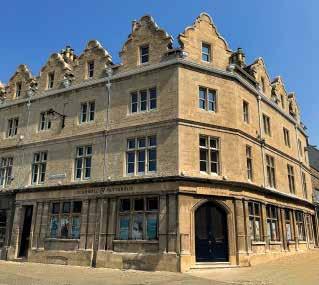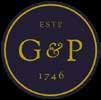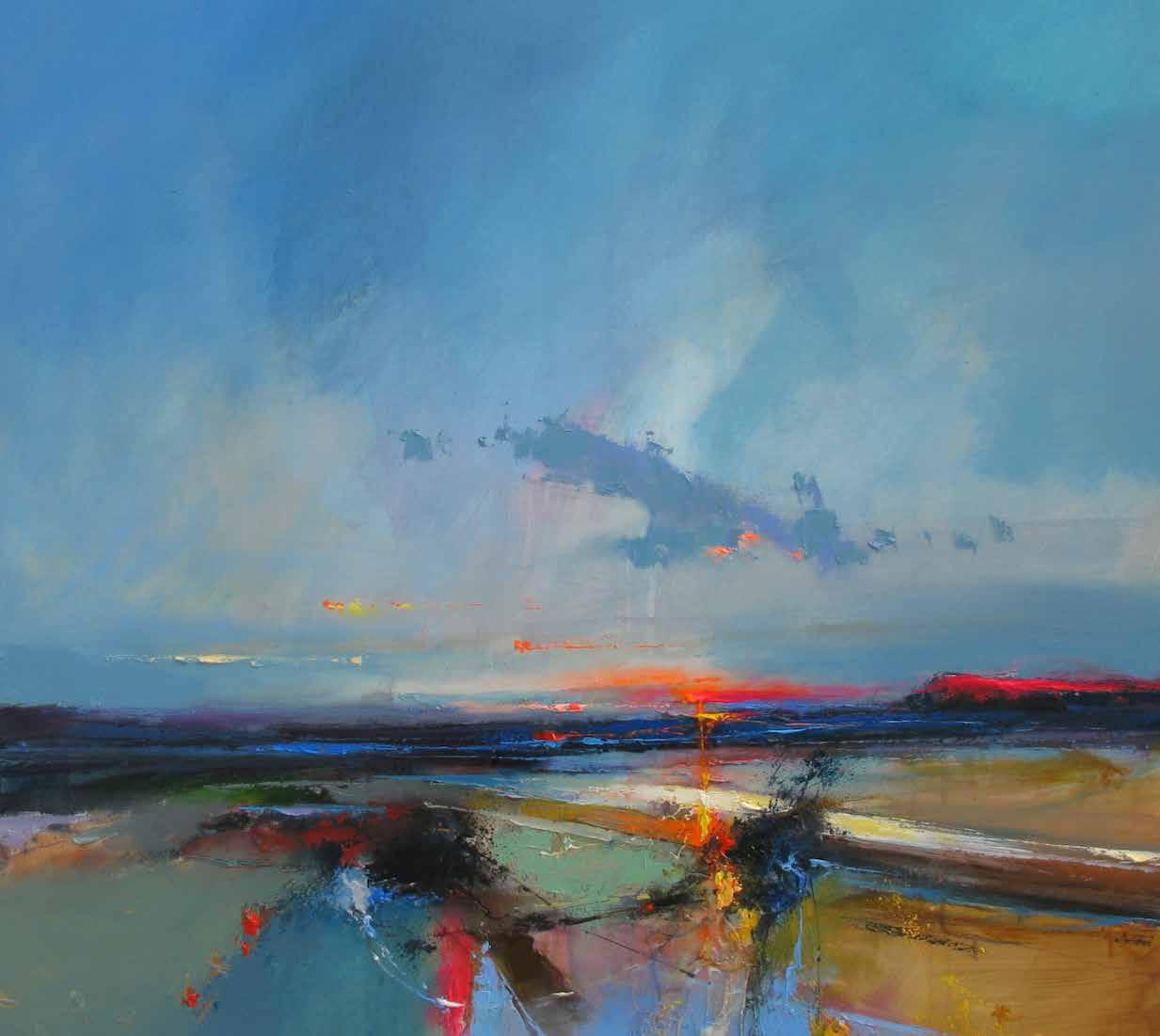

Gladwell & Patterson
Antiques & Modernism Winnetka 2025

38 x 38 cms / 15 x 15 inches
Layers
Mixed Media
$3,250
Rob Fogell
British, (Contemporary)
Gladwell & Patterson at Winnetka
Gladwell & Patterson are delighted to return to the Winnetka Antiques & Modernism Show, a treasured celebration of fine art, antiques and design. This year, we are proud to present a captivating collection of paintings and sculpture that reflects our enduring devotion to beauty, craftsmanship and artistic vision. Our presentation includes the tranquil winter landscapes of Alexandre Louis Jacob, whose snow-covered vistas of the Oise and Marne capture the quiet charm of light and atmosphere. Alongside these are compelling modern works by André Lhote and Donald Hamilton Fraser, harmoniously complemented by the graceful bronze sculptures of Anthony Theakston.

Cory Fuller
cory@gladwellpatterson.com
+44 (0) 7866 450070
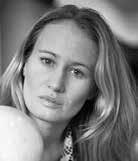
Madeleine Luxton
madeleine@gladwellpatterson.com
+44 (0) 7517 403 448
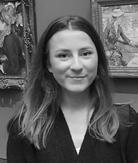
Booth 2
30th October - 2nd November 2025
Winnetka Community House, 620 Lincoln Avenue
Winnetka
A GALLERY OF DISTINCTION
Gladwell & Patterson is a family-run fine art gallery with a legacy dating back to 1746. As one of London’s longest-standing art dealerships, we specialise in sourcing exceptional paintings and sculpture from Impressionist, Post-Impressionist and contemporary masters.
• Our history has been a distinguished two and a half century journey. Along the way the various incarnations of Gladwell & Patterson overcame the Blitz and enjoyed the friendship of Vincent van Gogh.
• As you stepped across the historic mosaic doorstep brought down from the Cheapside gallery and reinstalled here – ‘Gladwell’s Corner’, you were stepping into a wonderland.
• Paintings hung floor to ceiling and on every available space on the back of doors and up and down the stairs. A compact and charming space, the gallery was a haven for all who visited. A place of calm amongst the hubbub of the surrounding City.
In recent years the gallery has gone from strength to strength, participating in numerous art fairs world wide. The team have showcased stunning artwork in the United States, Asia, Europe and the United Kingdom, taking the true ‘Gladwells charm’ along with us and meeting many wonderful friends and collectors along the way.

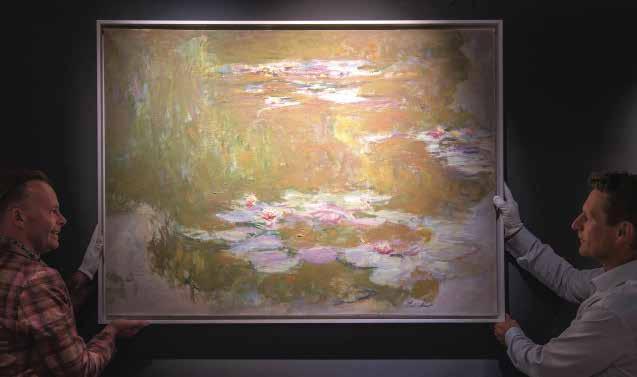
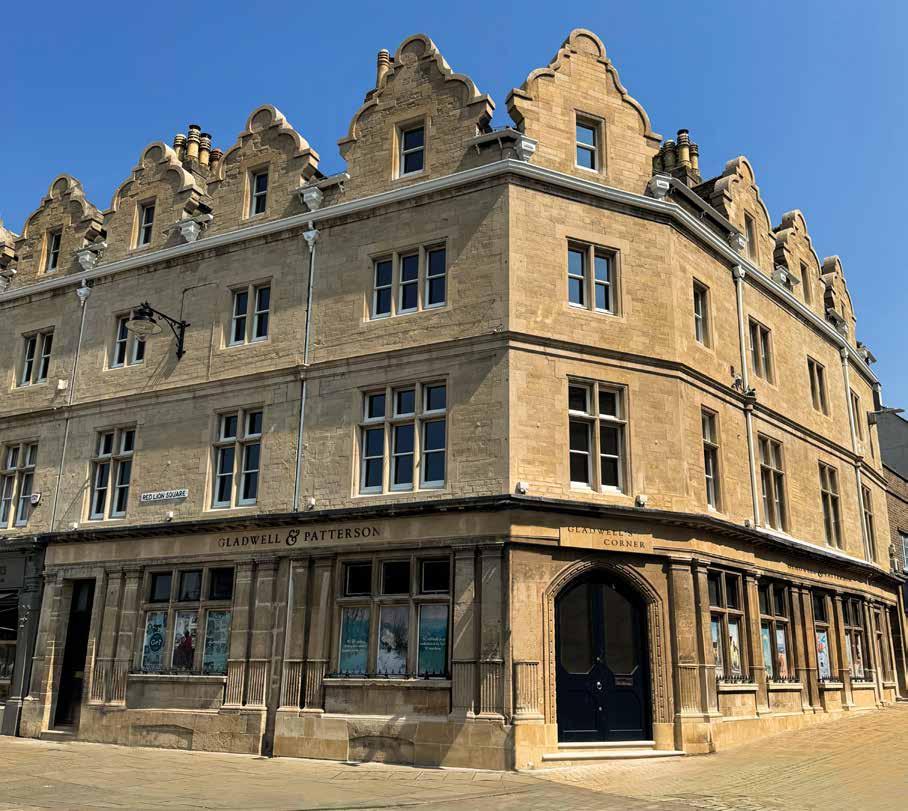
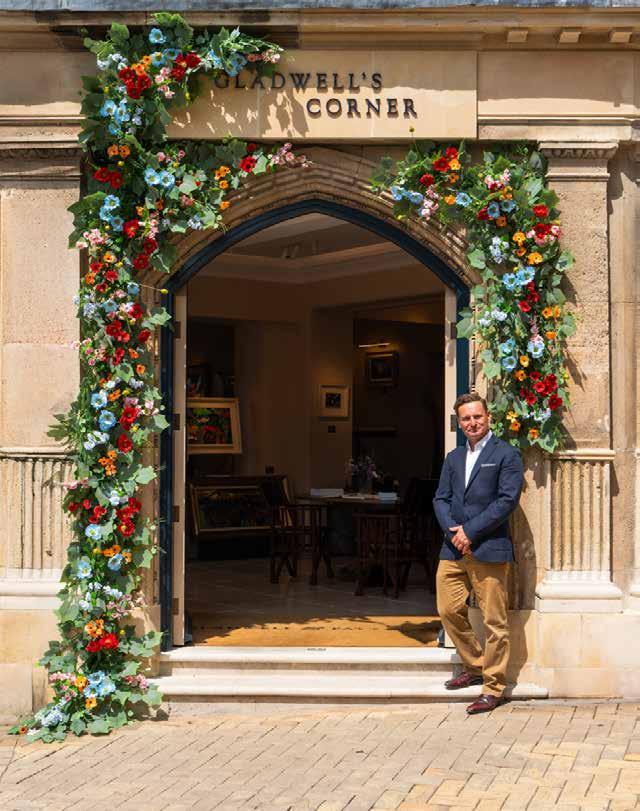
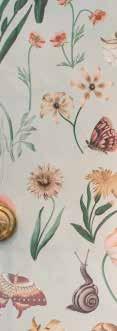
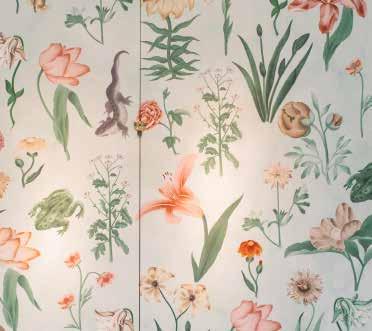
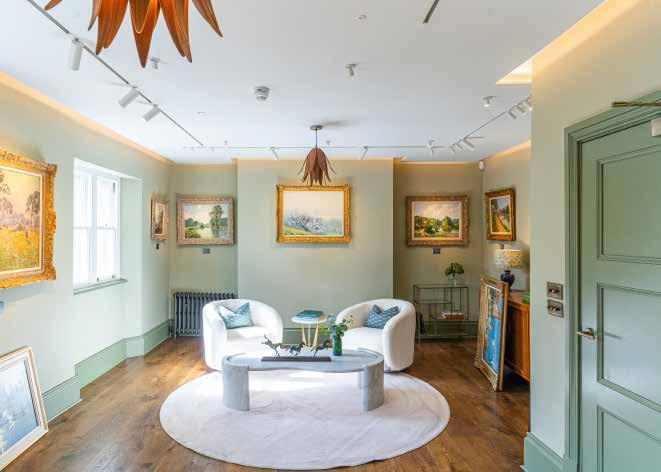
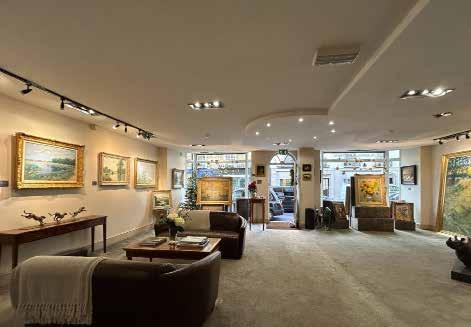
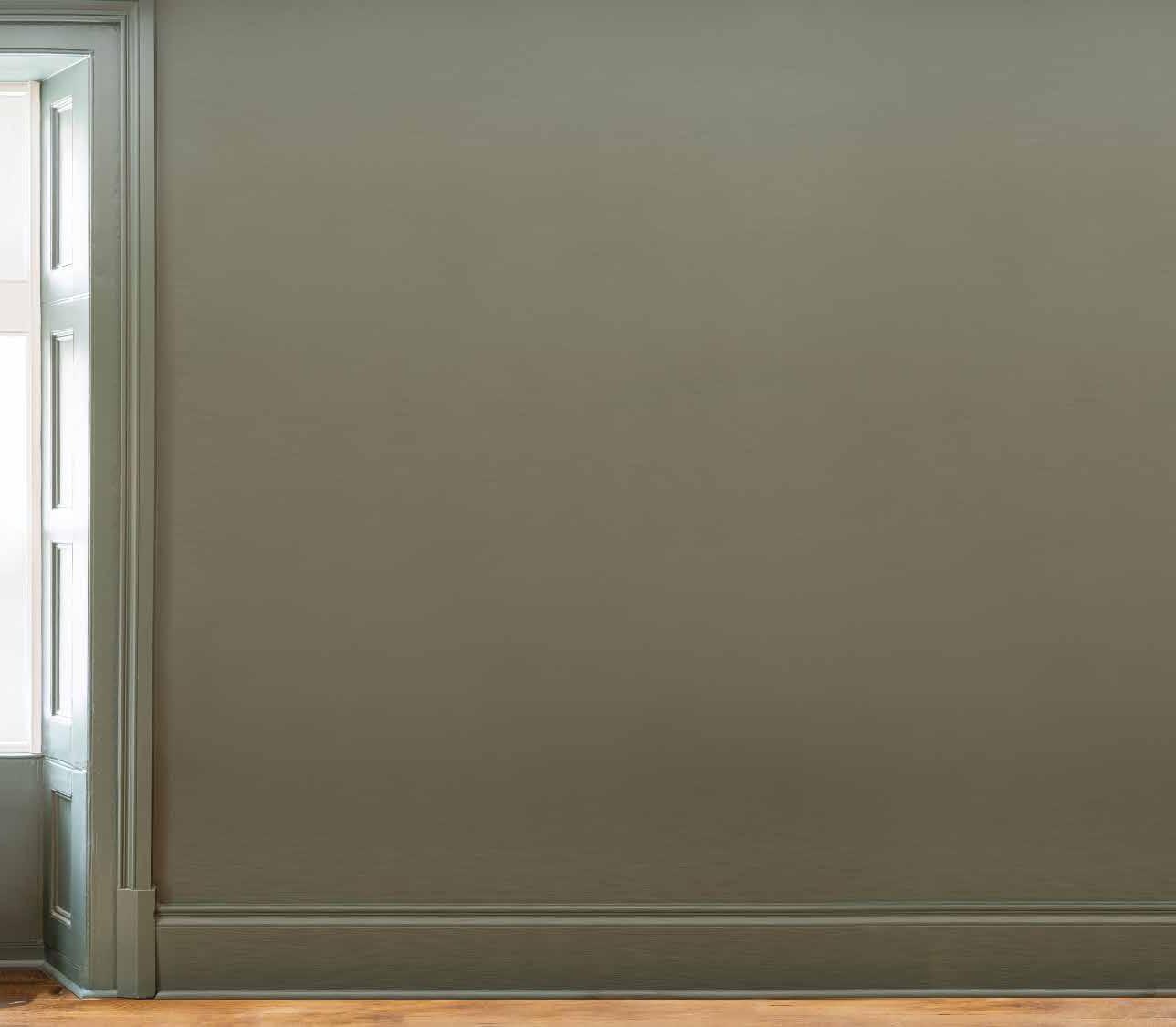
London: Our Legacy
With Emily Campin
Gladwell & Patterson stands as one of London’s oldest and most prestigious galleries, with a legacy that spans over 275 years. Nestled behind our distinctive monochrome windows on Beauchamp Place, we are proud to reflect on our rich history and enduring presence in the heart of this vibrant city. From hosting unique experiences like our Picasso Pop-up bar to celebrating the works of legendary artists such as David Shepherd, the gallery has consistently been at the forefront of London’s art scene.
Our goal is to find beautiful artworks for exceptional art collections. Nothing gives us greater pleasure.
Q. What makes London such an integral part of Gladwell & Patterson’s identity?
London has been more than just a home to Gladwell & Patterson, it’s been the very heart of our identity for almost 300 years.
London holds a pivotal role in the art market due to its rich cultural history, world-class institutions, and vibrant gallery scene. Home to major auction houses, magnificent hotels, and outstanding restaurants, London is a city with something for everyone.
We love to meet new clients and see familiar faces from all over the world when they visit us at our
Knightsbridge gallery. Whilst we grow and expand our presence across the UK, London will always be home and has a special place in our hearts. Bring on the next 300 years!
Q. What exciting developments are on the horizon for the gallery?
The future is certainly exciting! With a magnificent new gallery in Stamford, which is perfect for hosting and entertaining, we now have two stunning galleries to welcome you to and we hope to be bringing you many more events and exhibitions this year.
We have had the privilege to work with some brilliant luxury brands this year such as Private Cellar, Fromental, and Boodles. A particularly special event was one shared with Boodles at their Mayfair showroom that
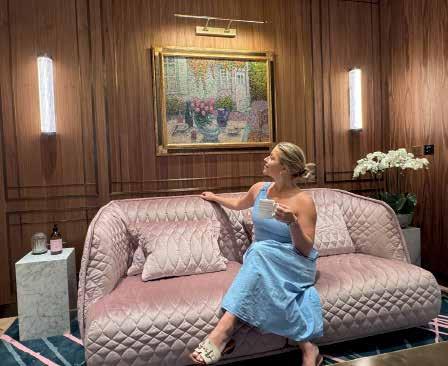
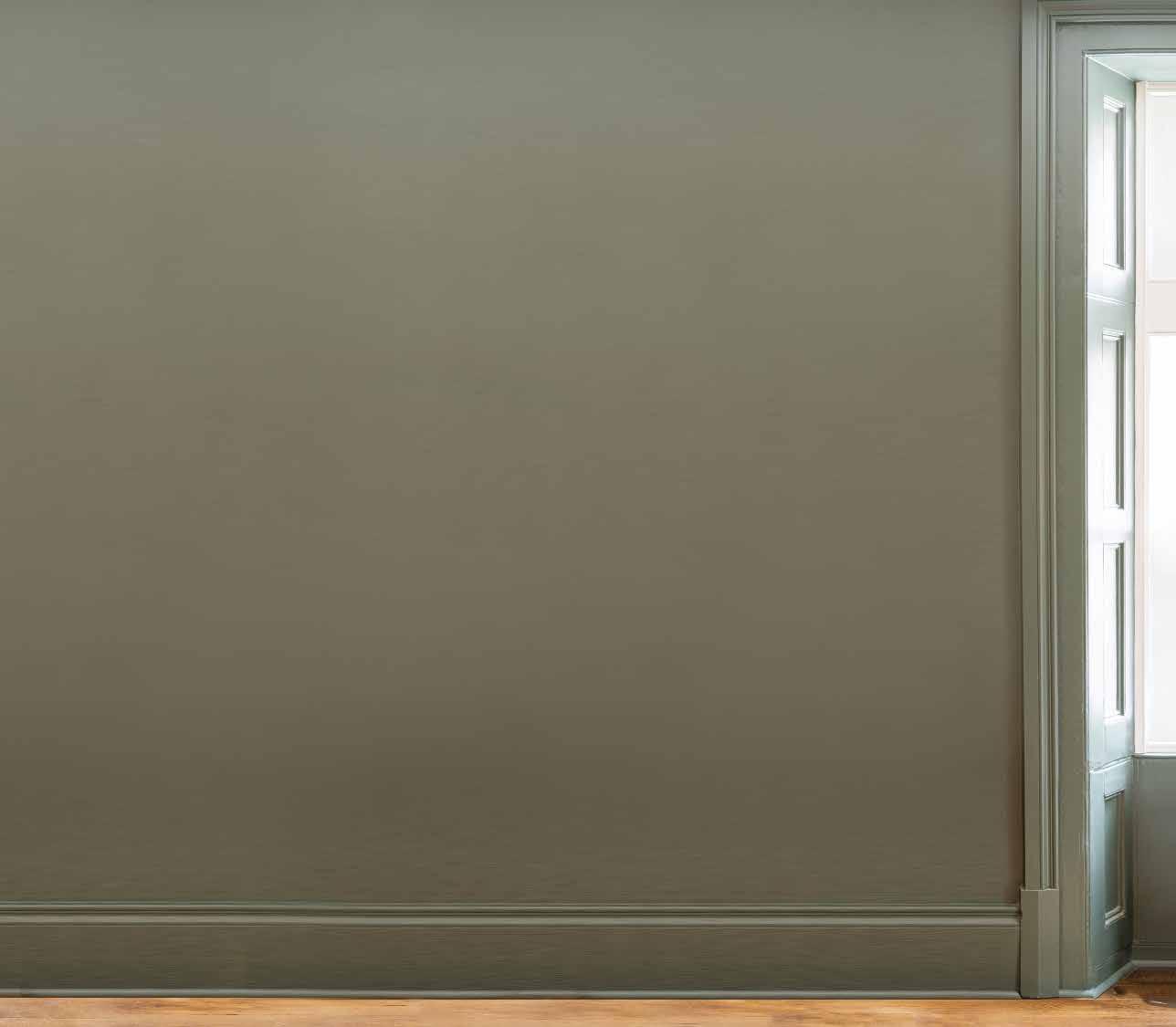
is on the site of our old gallery, W H Patterson on Albemarle Street. It was rather nostalgic hosting an event with them in our old home, celebrating a combined history of over 500 years of business. If you are ever in the area, make sure you pop in and you should find a beautiful painting in their private room downstairs.
Q. What is happening with the UK art market?
The art market is sadly not immune to political uncertainty, but during times of change there are always new opportunities, and we have been lucky enough to acquire some brilliant paintings during this time, and we have the privilege to share these with you and pass on those exciting acquisitions. There is something to be said for enjoying your investments on your walls rather than in a bank account! Despite market fluctuations, the demand for quality art is unwavering, and we’re always excited to bring new pieces into our collection.
Q. Which artists or acquisitions are particularly inspiring you right now?
Our acquisitions director, Marie-Claire, has a talent for sourcing fresh and exceptional artworks. She works closely with our artists and is always on the hunt for new, fresh talent. Trawling the auction websites and private collections worldwide she continues to surprise us with her fantastic buys - most recently a rather unusual yet fantastic tropical fishing scene by Terence Cuneo.
Q. Which international shows are Gladwell & Patterson exhibiting at in 2025?
We love travelling the world with our beautiful paintings and meeting our lovely clients, both old and new. We have a busy schedule for next year, starting with our annual trip to Florida. Our East Coast tours continue with visits to Philadelphia and Newport, Rhode Island.
You may read this and think that there can’t possibility be time for any more shows, but our UK show circuit next year is also looking pretty exciting, with highlights including the RHS Chelsea Flower Show and Burghley Horse Trials.
Q. Have you seen any inspiring museum exhibitions this year?
Van Gogh: Poets and Lovers at the National Gallery in London – a must-see exhibition which really brings to mind Gladwell & Patterson’s legacy with this incredible artist.
Q. What is your favourite painting in the collection?
We are very lucky to have acquired such a special collection of Pierre Eugène Montézin ’s work this year. La Fenaison, a simple scene of workers harvesting the field, comes alive with the afternoon sunlight beating down, creating a shimmering effect that adds a sense of warmth and vitality to the scene. The pops of poppy red that appear in the thick impasto of the foreground are truly brilliant.
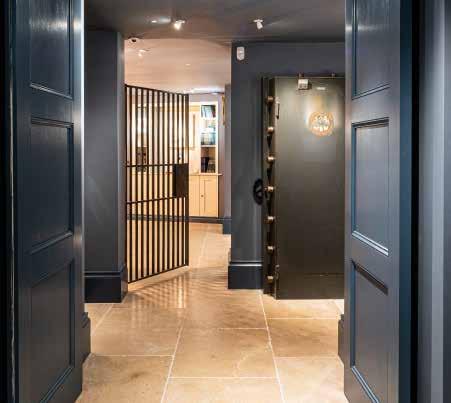
Bringing Art to You
With Glenn Fuller
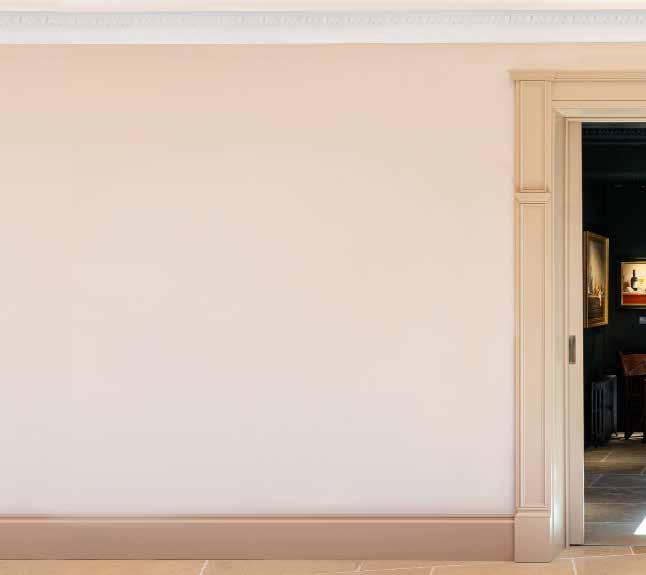
After an intensive nine months of dedicated effort transforming No.1 High Street into a remarkable art gallery, we had the privilege of sitting down with Glenn - one of the driving forces behind the Stamford Gallery - just before he jets off to another Art Fair. Seated in the newly finished Treasure Vault, in the basement of the gallery, Glenn takes a moment to reflect on the journey that brought this space to life. Over a glass of Montrachet, we engage in a conversation about the gallery’s evolution, the vibrant art community of Stamford, and the exciting future that lies ahead.
Q. Gladwell & Patterson is a name synonymous with excellence in the art world. What sets the gallery apart from others?
We are proud to have a rich and illustrious history, which provides us with a deep understanding of the essential elements that make our gallery strong and highly respected.. Our dedicated and passionate team work tirelessly to discover the finest artists and paintings, helping our valued and lovely clients build beautiful and enjoyable art collections. This dedication allows us to guide our clients, many of whom have become dear friends,
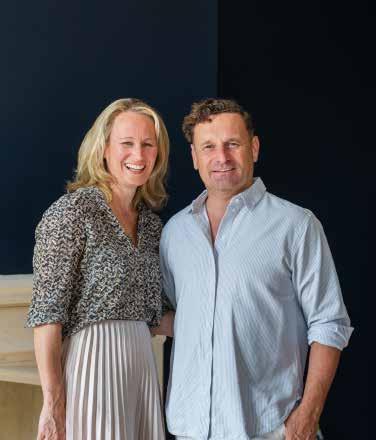
as they build collections that are personal, meaningful, and enduring.
Q. The gallery’s recent expansion to Stamford represents a significant step forward. How does this fit into Gladwell & Patterson’s longterm vision?
The opening of No. 1 High Street marks a seminal moment for the gallery. By acquiring the freehold, we have created an opportunity for permanence while also challenging the status quo in how paintings are presented.
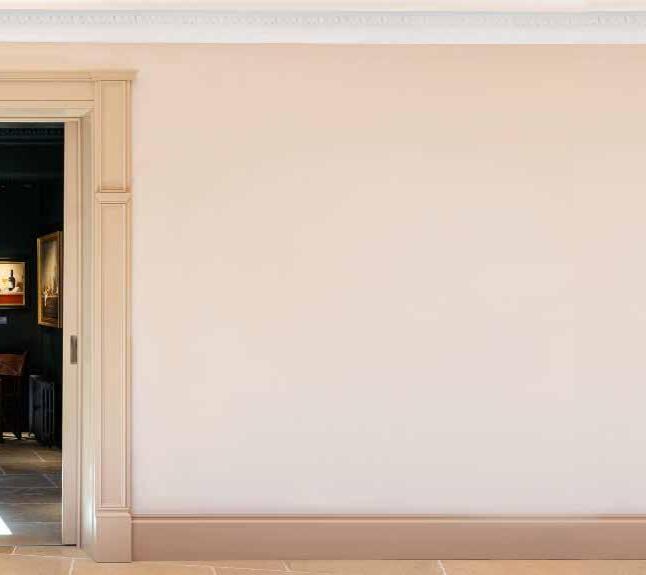
Our vision for the Stamford gallery was to craft a space where our exquisite paintings could be appreciated in the most enjoyable way possible. Discovering this historic freehold building in such a prime location has provided a lasting and prominent setting for our clients to fully immerse themselves in our collection.
By designing each room with the paintings and sculptures in mind, we’ve ensured that every artwork can be experienced at its best. We hope this inspires visitors to design their own spaces around the art they cherish, deepening their connection to it and enhancing their enjoyment.
Our long-term vision has always been rooted in creating lasting bonds - between art and
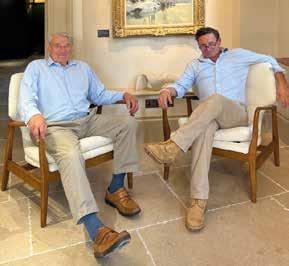
people, and between people and place. Stamford, with its beauty and history, felt like the ideal location to continue this journey.
Q. Stamford is a truly special place. What is it about the town that makes it the perfect home for the gallery’s latest venture?
We settled in Lincolnshire ten years ago, shortly followed by Cory and my parents who all now live locally, and it is a wonderful place to live. Stamford has been praised as England’s most beautiful town and the finest stone market town by distinguished figures such as Sir John Betjeman, Sir Walter Scott and Nikolaus Pevsner.
This charming, historic, and vibrant town once served as a gateway between the north and south, making it an ideal location. With easy access from all over the the country, it is a popular destination, easily accessible for local and international art enthusiasts alike.
Q. Can you tell us more about the wider region and why it appeals to you personally?
The area surrounding Stamford is nothing short of breathtaking. Nestled on the edge of some of England’s most picturesque counties and framed by the vast skies of the Fens, Stamford exudes a natural charm, rich history, and timeless beauty.
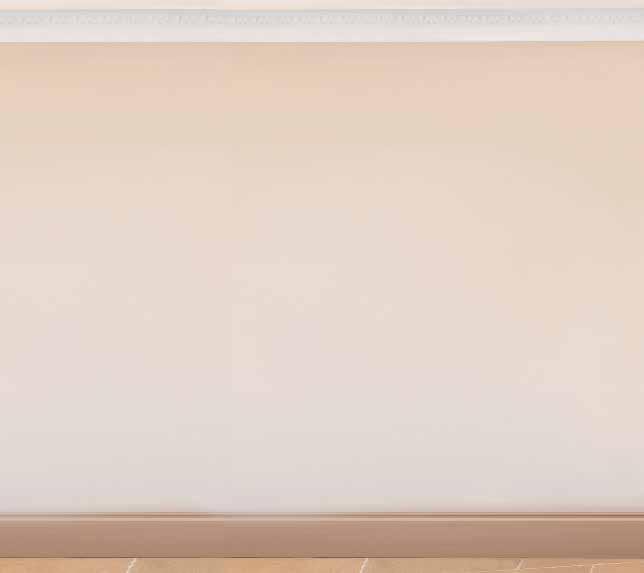
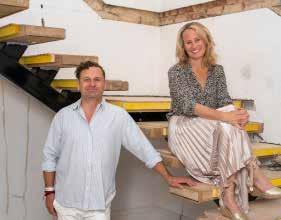
With quaint English villages nearby and the stunning Rutland Water close at hand, this area offers an abundance of reasons to fall in love with this remarkable part of the country. It offers a quality of life that is in harmony with our values: history, beauty, and a deep connection to place.
Q. Transforming an historic building into a modern gallery must have been a significant challenge. What obstacles did you face during the renovation process?
Transforming this beautiful building, that has been a bank for the last 115 years, with its maze of small rooms and corridors, into a space suited for the 21st century and beyond has been an exciting and enjoyable challenge. One of the trickiest aspects was finding the perfect location for the new staircase
and elevator, elements crucial for creating a seamless flow through the gallery.
One of the first unexpected obstacles arose when we decided to replace the roof of the bank office, a 1980s extension, with a large skylight to bring in abundant natural light. What we didn’t anticipate was that the existing roof was reinforced with 18 inches of reinforced concrete, much to the builders’ dismay! The greatest challenge, however, was balancing our varied opinions and tastes, ensuring that tha e final result was not a compromise but a cohesive vision, and this is something we’re incredibly proud of achieving.
Q. After all the hard work, what aspect of the new gallery are you most proud of?
Everything - absolutely everything - has turned out even better than my most optimistic expectations. Visitors step into the space and are genuinely blown away, a phrase we’ve heard countless times in just the first few weeks. Personally, I’m thrilled with the lighting and how beautifully it showcases the art, the architecture, and the building itself.
Q. What is your favourite painting in the collection?
It’s difficult to choose, as so many of the paintings are shown to their absolute best in this new environment. A new, large Alexandre Jacob piece, for example, looks stunning above one of the new fireplaces—I find myself returning to it again and again. The Paul Brown paintings in the bar area, set against walls and ceilings in Obsidian Green, radiate a sense of quality and richness that’s truly captivating.
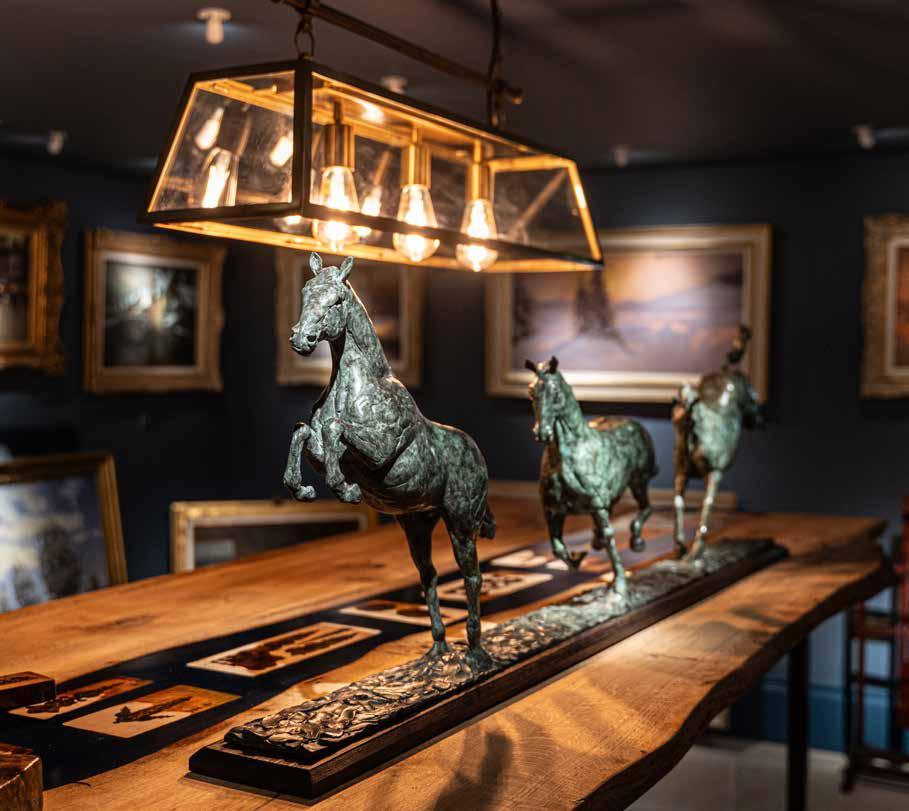
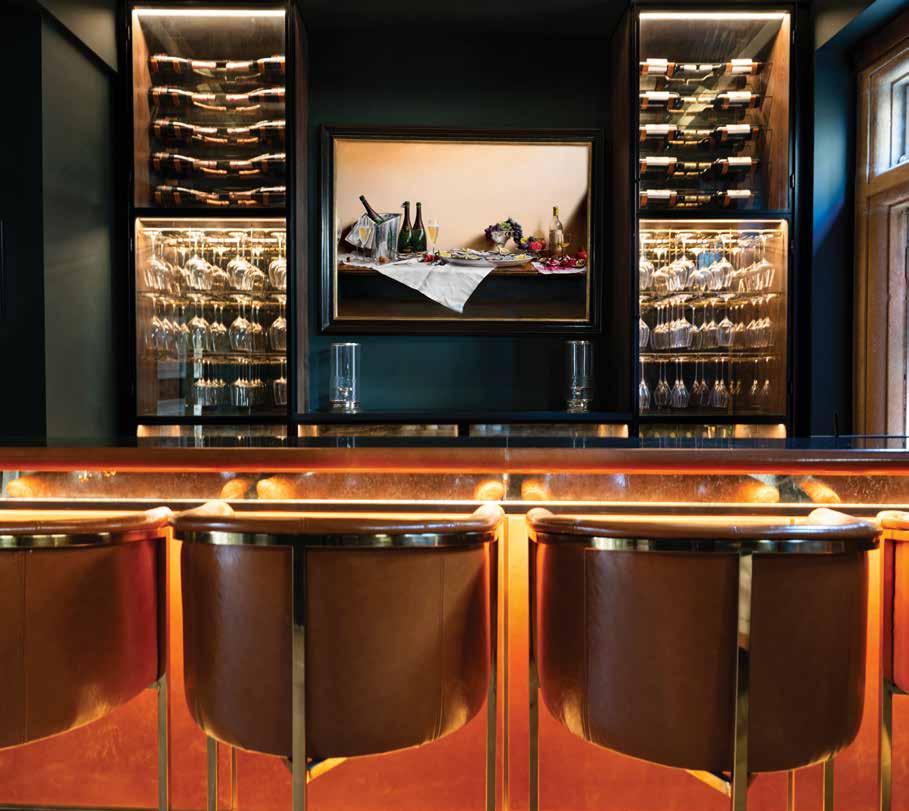
Turning Light, 2025
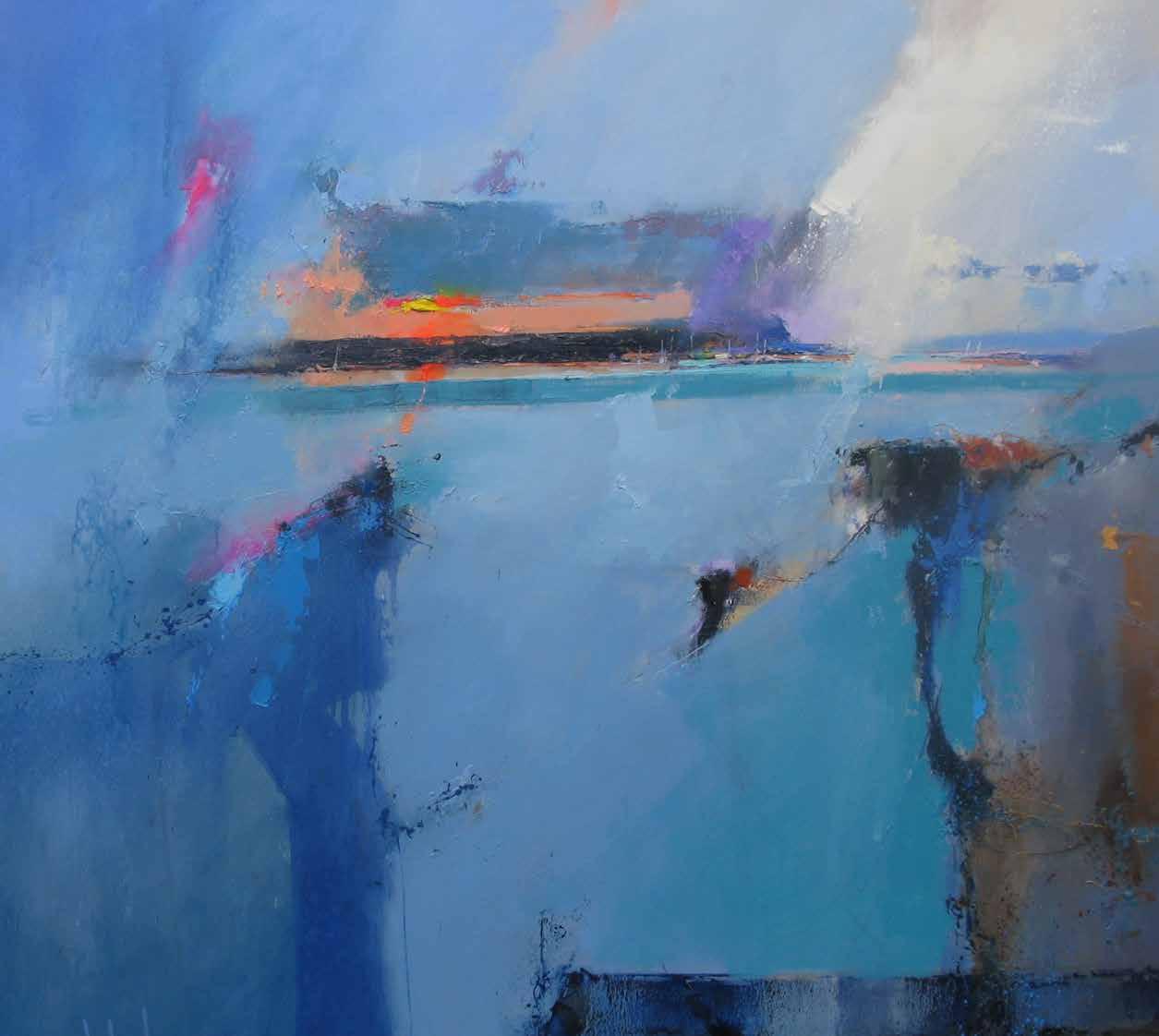
80 x 80 cms / 31½ x 31½ inches
$10,000
Oil on Canvas
Peter Wileman
British, (Contemporary)
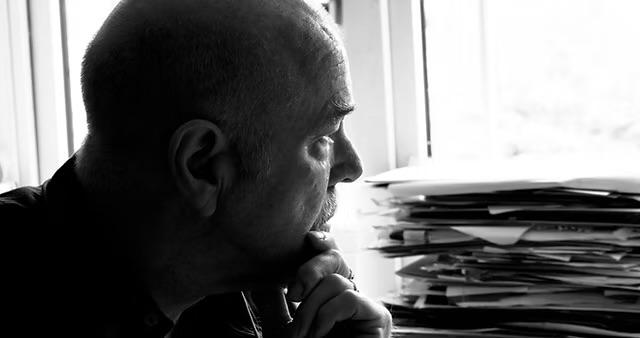
"My painting is all about light and how we see it and react to it."
“For me, painting is as much a part of the day as eating and sleeping. In fact, it’s more important than that, more like breathing! I could not imagine a single day passing without talking about, reading about, or actually taking part in some kind of activity concerning art. Like a moth is drawn to a flame, a painter is drawn to the light, and although I have tried to express myself with painting in many different forms, mediums and styles over the years, my path has lead me inexorably, like so many others before me, to try and capture that elusive quality of light, that only a shimmering sunset, dawn of a new day, dazzling sparkle of reflection off both sea and river presents to one who is prepared to both look and see.”
-
Peter Wileman
Peter Wileman
British, (Contemporary)
Highly acclaimed British abstract artist Peter Wileman is one of the UK’s leading contemporary landscape artists today. Known for his dazzling abstracted oil landscapes, Wileman’s style is bold and vigorous, both in the use of colour and handling of paint, as he explores the effect of light on his subject. Seeking atmosphere through light and colour, he works in varying degrees of abstraction.
Interested in painting from a young age, upon leaving school he went straight into his first job at Hallmark Cards, a card company, where his innate artistic talent was immediately recognised. Here Peter spent five years studying lettering and design, his first artistic training - which gave him a solid grounding in colour awareness and formal structure. Wileman later became the art editor on a number of magazines. Looking for an opportunity to develop his own artwork, Peter left his budding design career to become a freelance artist; a decision from which he has never looked back.
Wileman’s style is bold and vigorous, both in the use of colour and handling of paint, as he explores the effect of light on his subject. Working exclusively in oils, the medium most adaptable to changes of light and mood, he evokes atmosphere through light and colour through varying degrees of abstraction. Wileman’s work is reminiscent of the great master Joseph Mallord William Turner through its atmospheric quality. His work has a superb energy, with paint applied in washes and also with areas of impasto. The foregrounds are complex, but not distracting from the subject within his work.
Over the last two decades Wileman has exhibited regularly at a number of prestigious art venues including the Royal Society of Marine Artists, the New England Art Club and the Royal Institute of Oil
Painters of which he is an associate member. Wileman has built a distinguished reputation as one of the finest landscape artists practising in the UK today.
Surface and Silence, 2025
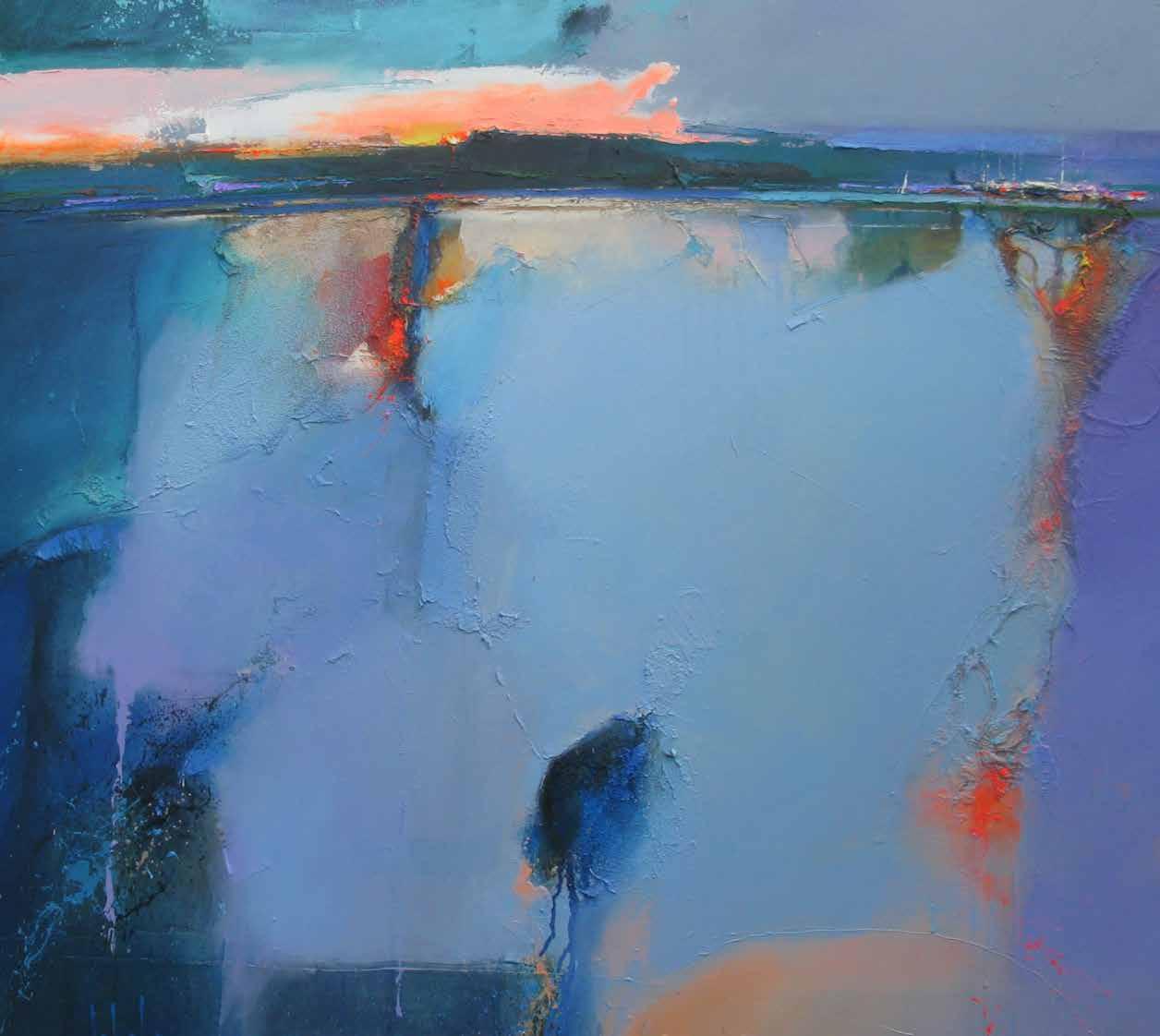
100 x 100 cms / 39¼ x 39¼ inches
$15,000
Oil on Canvas
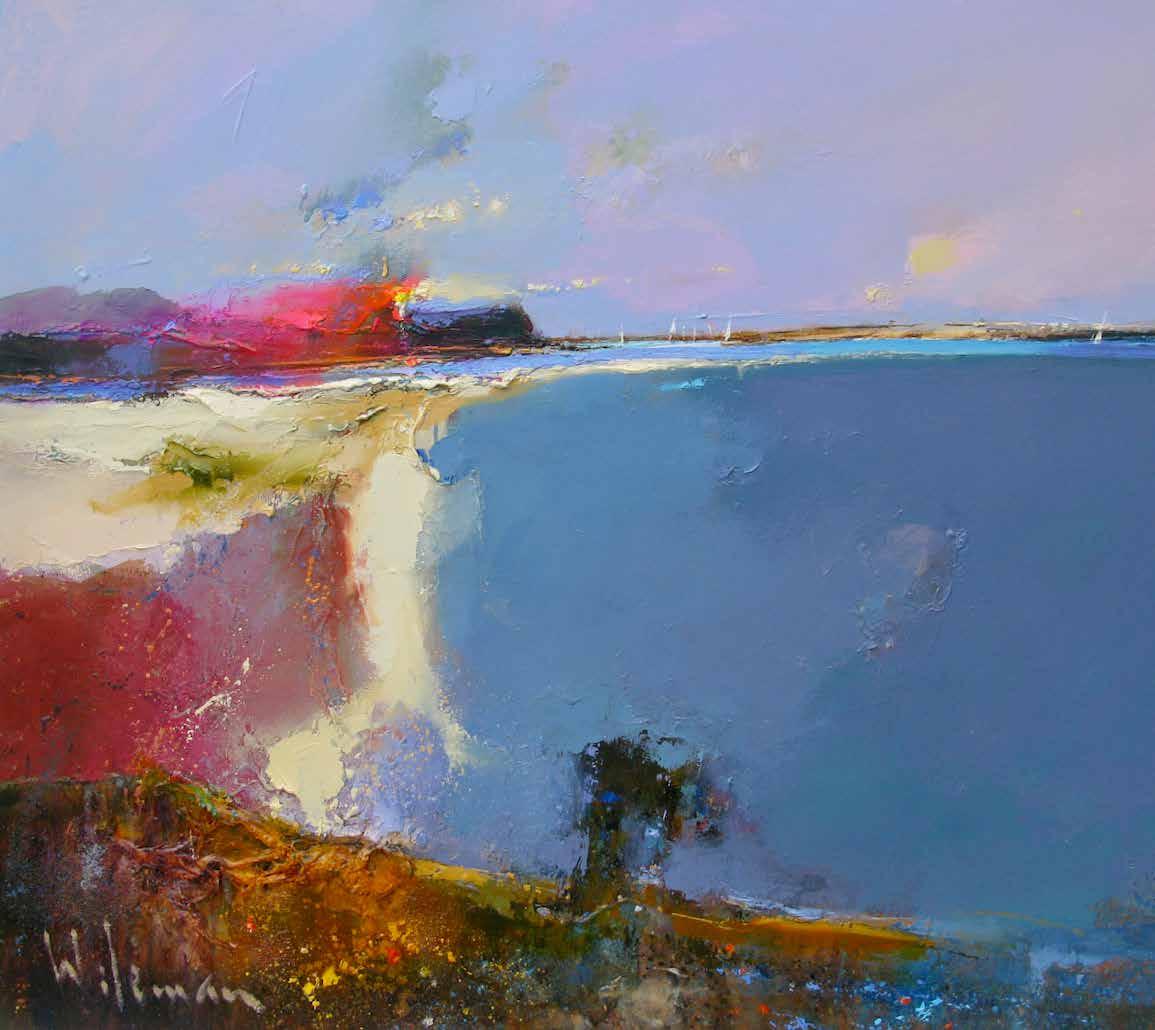
British, (Contemporary)
Peter Wileman
Whispering Tides, 2025
Oil on Canvas
50 x 60 cms / 19¾ x 23½ inches
$6,000
British, (Contemporary)
Beyond the Wetlands, 2025
80 x 80 cms / 31½ x 31½ inches
$10,000
Oil on Canvas
Peter Wileman
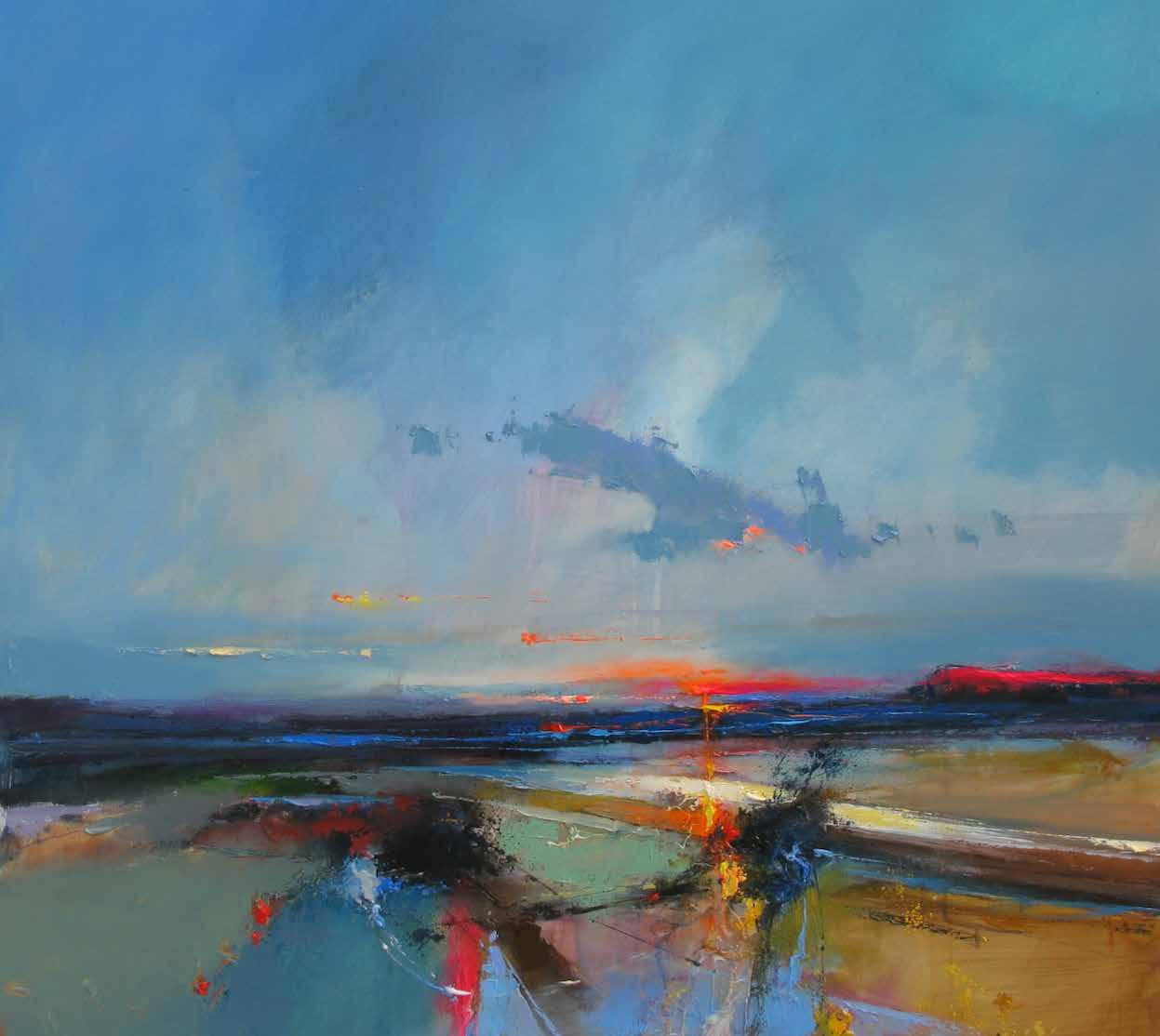
Peter Wileman
British, (Contemporary)
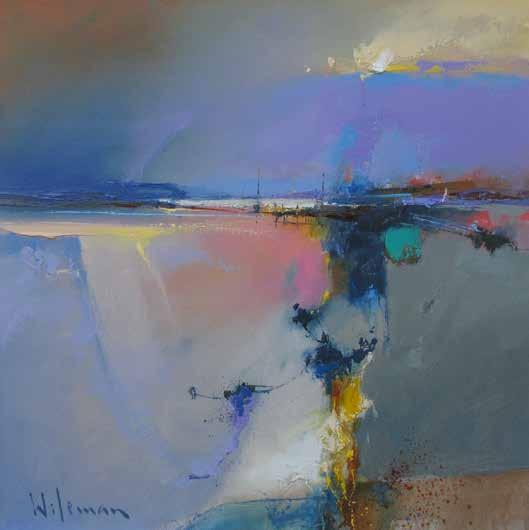
The Calm Within, 2025 Oil on Canvas 40 x 40 cms / 15¾ x 15¾ inches
$3,250
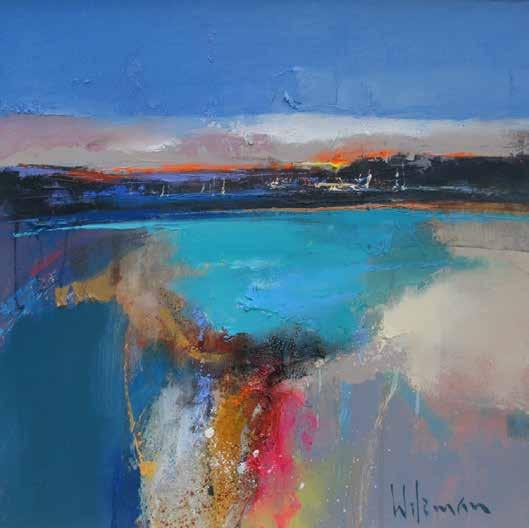
Finding My Way There, 2025
40 x 40 cms / 15¾ x 15¾ inches
Oil on Canvas
$3,250
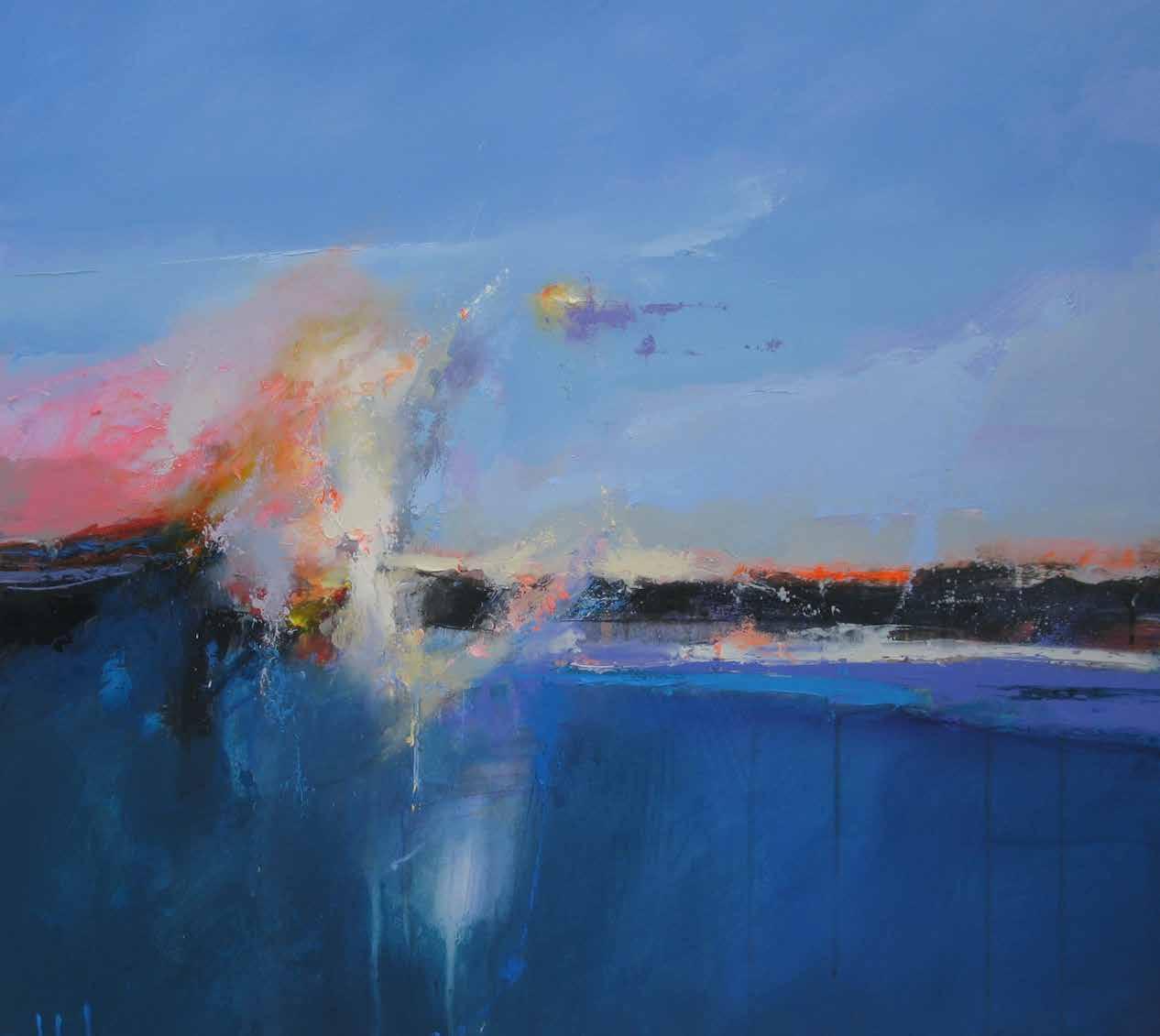
Breaking Wave, 2025
Oil on Canvas
80 x 80 cms / 31½ x 31½ inches
$10,000
Peter Wileman
British, (Contemporary)
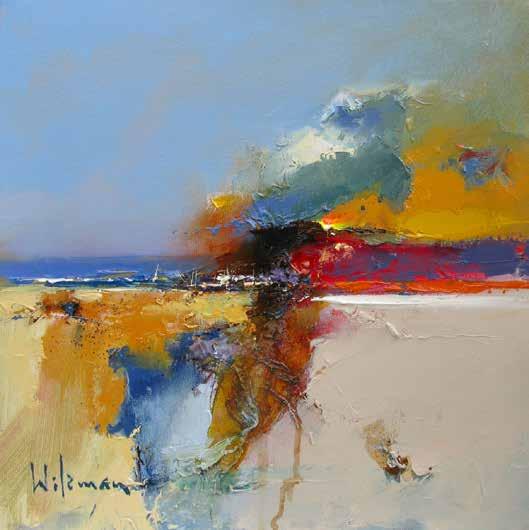
Ocean Breath, 2025 Oil on Canvas
30 x 30 cms / 11¾ x 11¾ inches
$2,750
Between the Lines
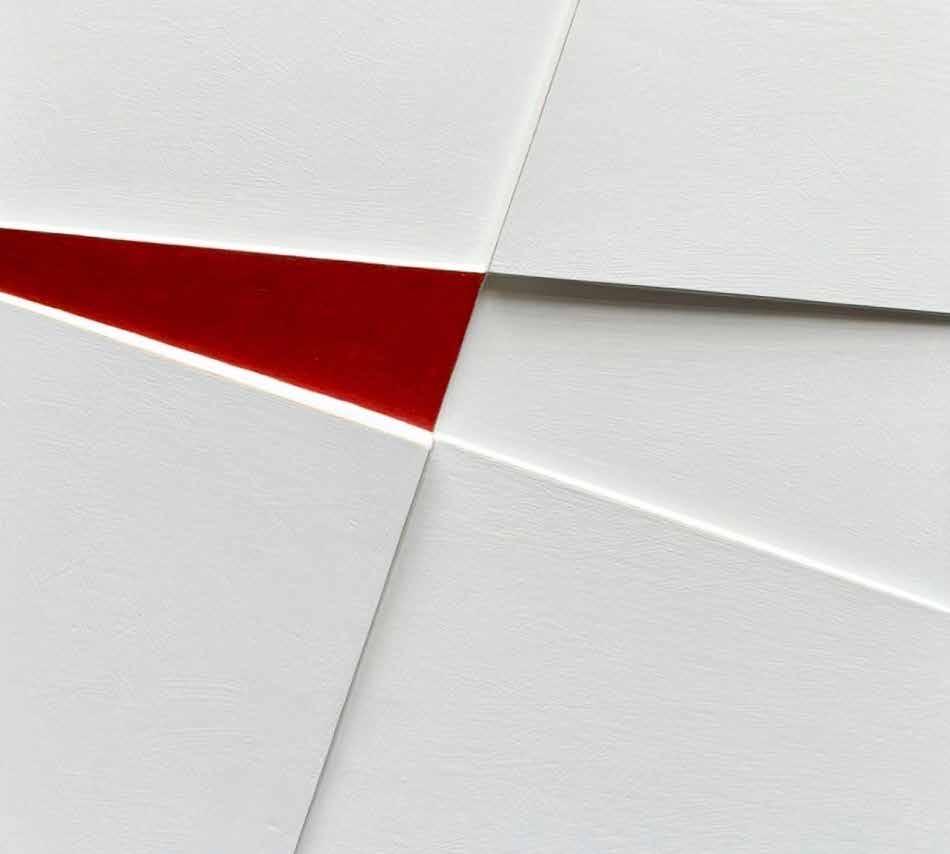
40 x 40 cms / 15¾ x 15¾ inches
$3,250
Mixed Media
Rob Fogell
British, (Contemporary)
Robert Fogell is a distinguished British contemporary artist celebrated for his mastery in sculpture and painting. With over two decades of professional experience, Robert has captivated collectors and audiences worldwide with his ability to harmonise the form, texture, and structure throughout his work. His artworks often explore themes of space and transformation, resonating deeply with art enthusiasts and collectors alike.
Beginning with form and sculpture, Robert creates naturalistic, dynamic structures that play with negative space as well as configurating shapes to capture which can be seen throughout his series of paintings exhibited at Art Palm Beach.
Born with a profound appreciation for the arts, Robert pursued formal training in Fine Art and Contemporary Sculpture, refining his practice and establishing a unique artistic voice. His work has since been featured in numerous solo and group exhibitions across the UK and internationally, including prominent exhibitions in London, Paris, and New York. Notably, his sculptures are part of prestigious private collections and corporate displays, underscoring his reputation as a sought-after artist in contemporary circles.
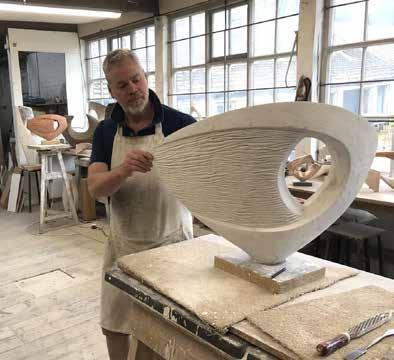
Robert’s ability to connect with his audience extends beyond his art. A skilled communicator, he actively engages with collectors and galleries, fostering lasting relationships. Through his keen understanding of the art market and trends, he has consistently positioned his work to appeal to a discerning clientele, achieving significant milestones in both commissioned and self-represented pieces.
Robert’s approach to art is deeply personal, making him an exceptional figure in the world of contemporary art. His work continues to inspire and establishing him as a true luminary in the art market.
Rob Fogell
British, (Contemporary)
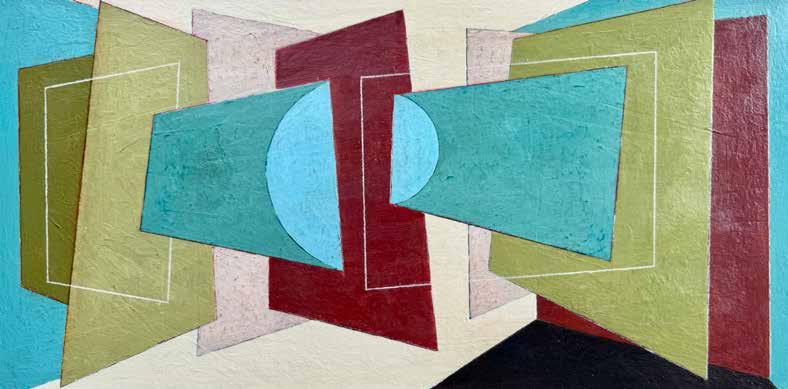
Play of Light
Acrylic on Panel
32 x 64 cms / 12½ x 25¼ inches
$4,500
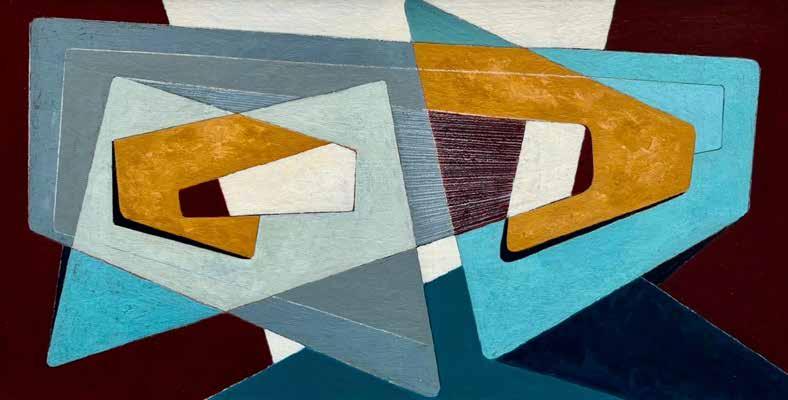
Connection
Acrylic on Panel
32 x 62 cms / 12½ x 24½ inches
$4,500
Rob Fogell
British, (Contemporary)
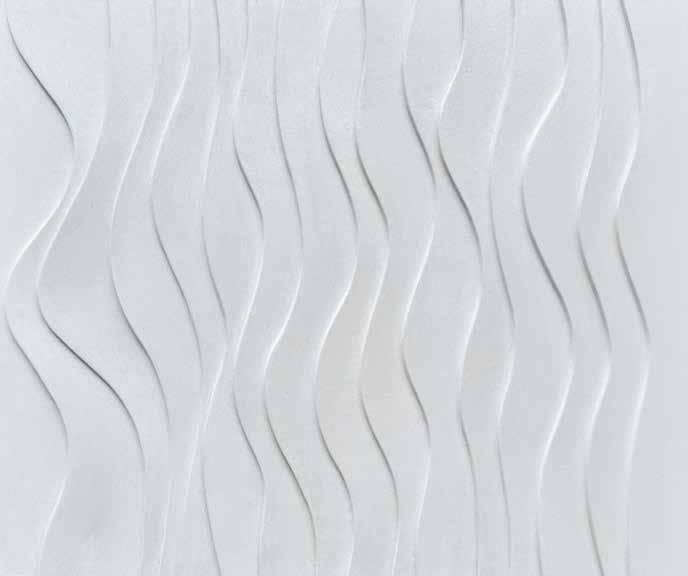
250 Overlap Series
Mixed Media
40 x 47 cms / 15¾ x 18½ inches
$4,250

249 Overlap Series
Mixed Media
43 x 48 cms / 17 x 19 inches
$4,500
British, (Contemporary)
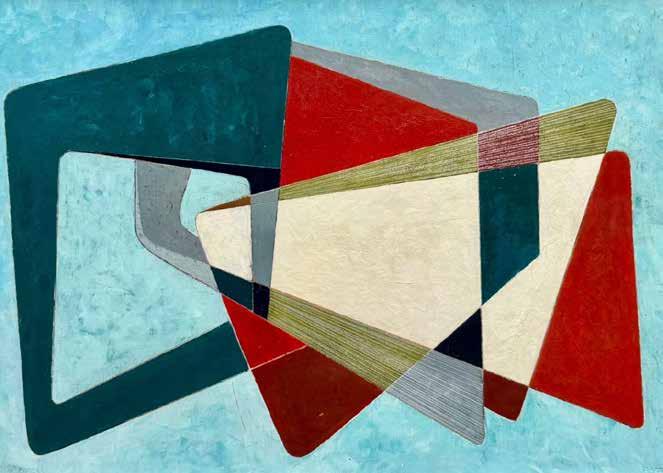
Rob Fogell
Turning Forms
Acrylic on Panel
45 x 62 cms / 17¾ x 24½ inches
$4,500
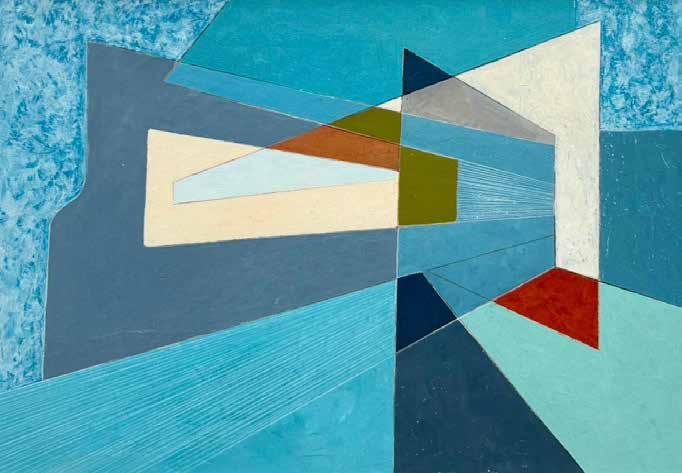
Elements
Acrylic on Panel
42 x 60 cms / 16½ x 23½ inches
$4,500
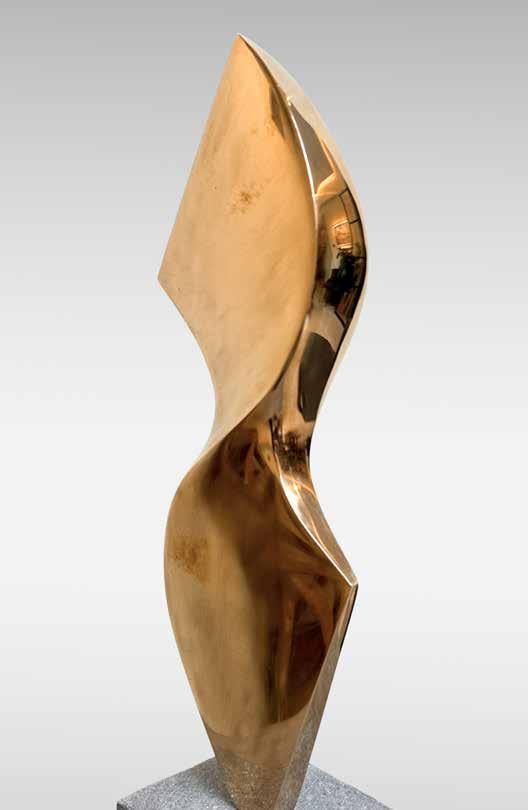
In Flight Bronze
36 x 12 x 10 cms / 14¼ x 4¾ x 4 inches
$5,250
Rob

38 x 38 cms / 15 x 15 inches
Unity
Mixed Media
$3,250
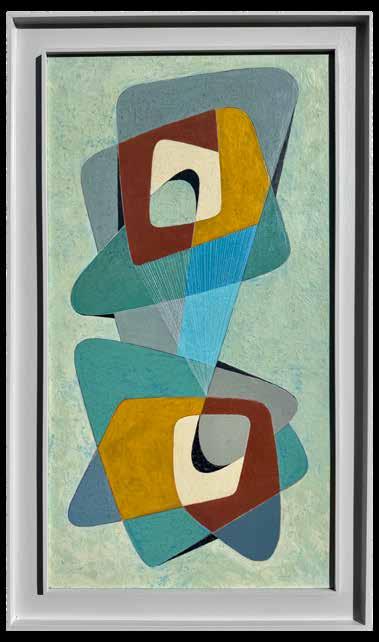
Balance
Acrylic on Panel
78 x 42 cms / 30¾ x 16½ inches
$4,950
Rob Fogell
British, (Contemporary)
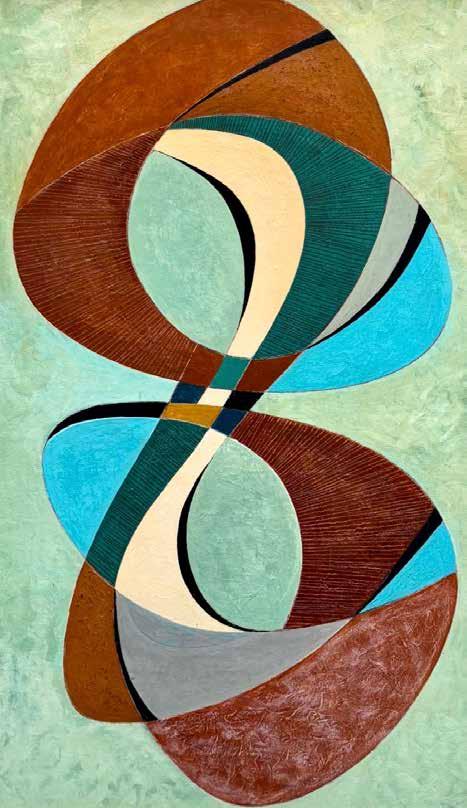
Harmony
Acrylic on Panel
64 x 36 cms / 25¼ x 14¼ inches
$5,250
Rob Fogell British,
(Contemporary)
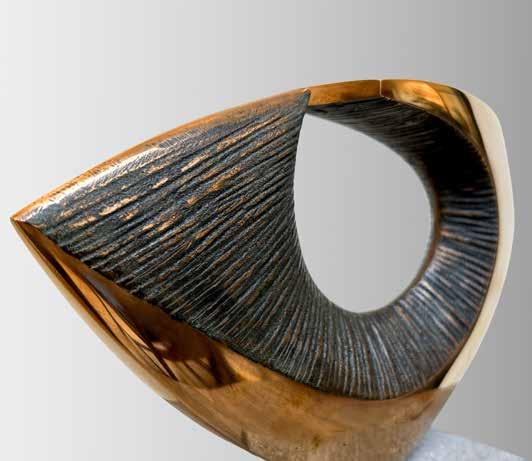
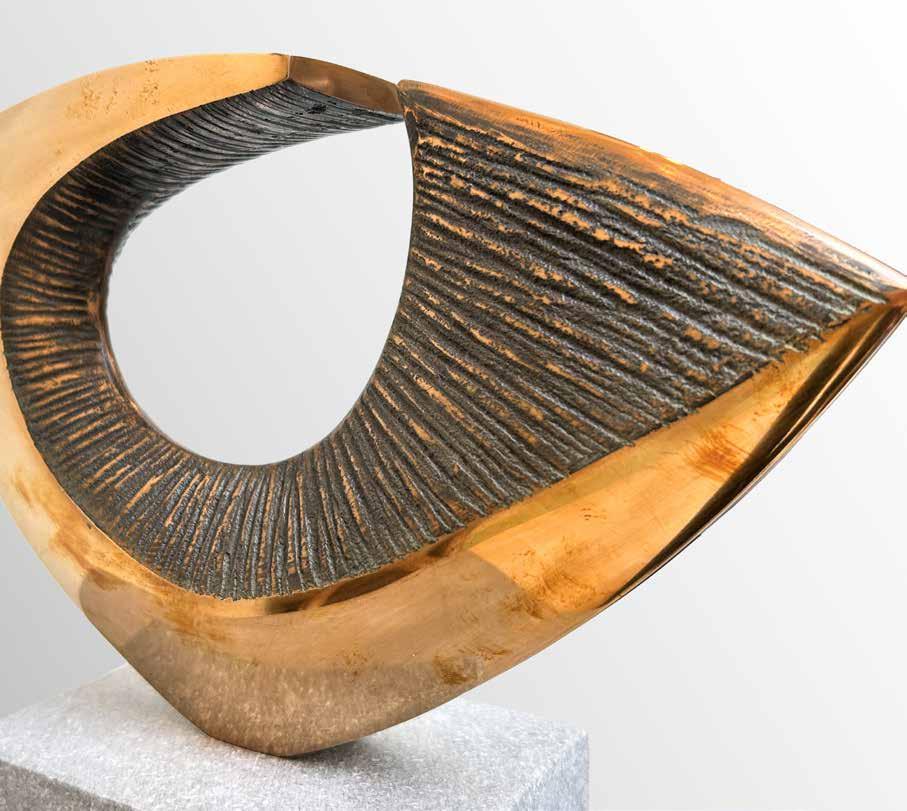
Seaform
Bronze
26 x 20 x 10 cms / 10¼ x 7¾ x 4 inches
$5,250
Donald Hamilton Fraser
British, (1929-2009)
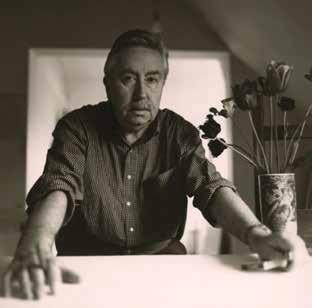
Donald Hamilton Fraser is a highly acclaimed British painter. Fraser dramatized his subjects with bold colours and a confident brush. His work employs a language of visual metaphor in which abstract and descriptive elements combine to express a heightened experience of the subject. His vibrant landscapes and bold still lifes were highly acclaimed during his lifetime and his work was widely exhibited in London, Paris and New York.
Inspired by the Scottish Highlands of his ancestors, Donald Hamilton Fraser depicted this rugged landscape like no other artist. Captured in all its myriad guises, according to the fleeting effects of light and atmosphere, Fraser transformed the Highland landscape into vivid swathes of colour. Fraser was a master at capturing an array of subjects, from the natural landscape to vibrant still lives. He adored the expressive nature of paint and the striking juxtaposition of primary colours, often layering them onto the canvas with a palette knife to produce an almost collagelike effect. Under his deft brush, the tradition of still life painting is distorted to form abstract almost dream-like fields of colour.
Contrasting in style, and highlighting Donald's diversity, are his wonderful chalk and wash drawings of dancers, executed in a naturalistic style, which contrasted with the semi-abstraction of his landscapes. Each one captures individual character and emotion whilst revealing his intimate knowledge of dance.
Fraser was born in London to Scottish parents. His father was an antiques dealer, and Fraser’s childhood was spent surrounded by beautiful objects and art. Fraser developed a keen interest in literature, reading voraciously and writing poetry, and he began to train as a journalist with Kemsley Newspapers before completing a period of national service in the Royal Air Force in the late 1940s.
Emerging Oil on Canvas
101 x 101 cms / 39¾ x 39¾ inches
$36,000
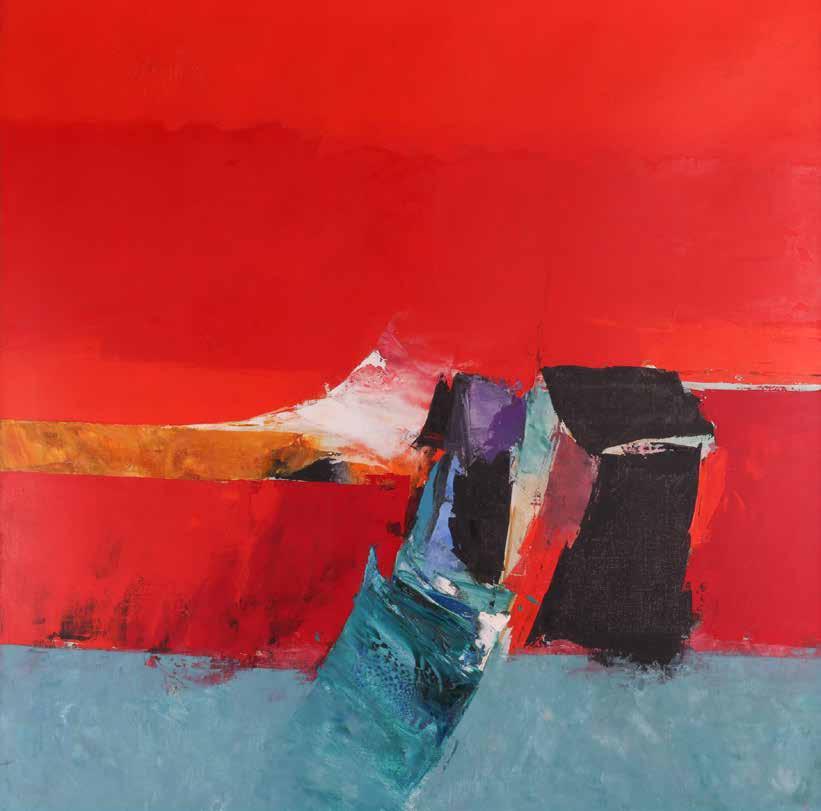
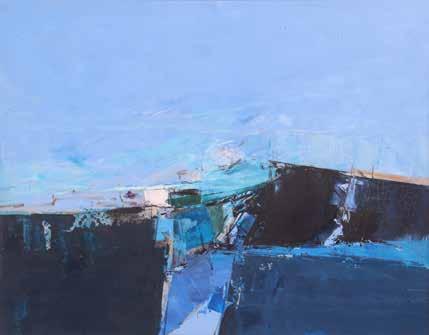
Blue Landscape, 1965
Oil on Paper laid to Board signed 'Fraser' (lower right)
20.5 x 26.5 cms / 8 x 10½ inches
$9,000
Fraser studied at the prestigious St. Martin's School of Art from 1949 to 1952 alongside notable contemporaries including Jack Smith, Leon Kossoff, Frank Auerbach and his close friend Peter Kinley. For many young artists in the early 1950s, they felt a need to become either an abstract or a figurative artist. Fraser did not feel these had to be mutually exclusive, and an exhibition of the work of Nicolas de Staël at Matthiesson's on Bond Street in 1952 acted as catalyst to reconcile these two styles within his work.
Whilst still at St. Martin's his work was regularly selected for inclusion in exhibitions by the London Group, The Young Contemporaries, Artists International Association and the Arts Council's travelling exhibitions. His first solo exhibition took place at Gimpel Fils in 1953 and later that year Fraser was awarded a French Government Scholarship, to live and study in Paris for a year. The following year he married Judith Wentworth-Shields, a graphic designer who had also attended St. Martin’s, at the British Embassy in Paris.
Returning to England in 1955, Donald Hamilton Fraser wrote for Arts Review for as a way of supplementing his artist's income but was soon able to focus entirely on his painting. In 1956 Galerie Craven held a solo exhibition in Paris and Gimpel Fils continued to hold numerous one man shows of his work.
Donald Hamilton Fraser
British, (1929-2009)
By the end of the decade the prestigious Paul Rosenberg Gallery, who was the American dealer for Nicolas de Staël, whom Fraser deeply admired, held his first one man show in New York. In 1955, Fraser won The Daily Express Young Artists Competition, and the Contemporary Art Society purchased one of his paintings. In the Autumn of 1955, he was further singled out by the art critic Eric Newton for first of a series of exhibitions to be held at Arthur Tooth & Sons. Along with Fraser, Newton selected Graham Sutherland, Leonard Rosoman, Stafen Knapp and Phillip Sutton for this pivotal exhibition.
From 1958 to 1983, Fraser taught at the Royal College of Art, one day a week. During this fellowship, he taught many notable young artists that would go on to be leading figures of their generation, including David Hockney, Ronald Brooks Kitaj, Patrick Caulfield and Thesese Oulton. Fraser became a Fellow of the Royal College of Art in 1970 and was elected as a member of the Royal Academy in 1975. Since this time Fraser undertook work for various committees and organisations connected with art and artists such as the Artists' General Benevolent Institution from 1981 to 1987 and in 1986 he was elected as Vice President of the Royal Overseas League and a member of the Royal Fine Art Commission.
In 1967, he started to make silkscreen prints and this medium continued to be an active aspect of his later work. In the late 1970s he was invited along with seven other artists to undertake a ceramic project in the Edinburgh Ceramic Workshop. This was a project sponsored by the Scottish Arts Council and entitled "Earth Images". He was also invited to be one of ten British artists to travel through Israel in 1979 with the objective of producing an exhibition of work resulting from the individual experience of the country, to be entitled "Israel Observed".
Throughout his life Fraser contributed to various artistic journals and ballet magazines, and wrote two books; “Gaugin’s Vision after the Sermon” in 1969 and “Dancers. A Book of Ballet Paintings” in 1989. In Fraser’s later years, he received many private and public commissions and took part in frequent gallery exhibitions throughout Britain. W. H. Patterson held a two-man exhibition in our Mayfair gallery in March 2000, in which every picture was sold within the first two days, and Fraser was a regular contributor to W. H. Patterson's prestigious Venice In Peril exhibitions in the years leading up to his death in 2009. Shortly before he passed away, two major retrospectives of his work were held in London at Arthur Ackerman and the CCA Galleries.
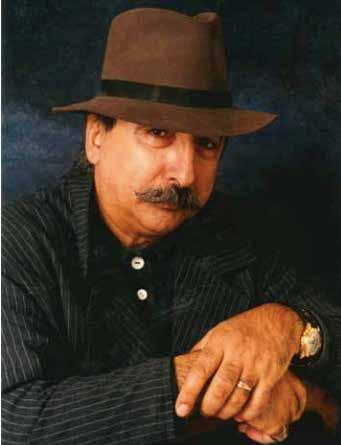
George Terzian is a French Postwar & Contemporary painter known for his vibrant, abstract and geometric compositions. Terzian moved to Paris in the 1960s and became a cabaret singer which enabled him to pursue his passion for painting. There he would turn to the cubist style for which he is celebrated, forming a synthesis of Picasso, Braque and Leger’s early work in his unique, post cubist style.
Terzian's work is heavily influenced by the geometric abstraction movement, which emerged in the early twentieth century and emphasizes the use of geometric shapes and forms to create abstract compositions. His paintings are characterized by their precise and clean lines, bold colors, and geometric shapes. He often uses a limited palette of colors, such as black and white, to create a sense of harmony and balance in his compositions.
Terzian was born in Marseille in 1939, to parents of Armenian descent. His family had left their homeland for Russia at the start of the twentieth century, although they would then settle in France shortly before the artist’s birth. Georges took an early interest in drawing and painting, and his parents therefore encouraged him to join the Ecole des Beaux-Arts in Marseilles at the age of fourteen. From a studio in Sainte-Miter, he would experiment with impressionist techniques en plein air in the Provençal countryside, working in gouache and oils in a manner reminiscent of Cèzanne, continually honing his technique.
Yet Terzian was clearly a man with an eclectic taste which ran beyond his skill as an artist. In the midst of his studies in art school, Terzian discovered a love of boot making, which prompted him to interrupt his education for over a year while he studied the craft. When he moved to Paris at the age of twenty, he also elected to study music, and took lessons from the famous singer Jean Lumière. In fact, while his style began to transition towards cubism in the early 1960s, it was his job as a cabaret singer which would support the young artist financially. It is easy to see Terzian’s polymathic nature in his mature paintings, which draw from a wide range of styles and cultures to create their inimitable modernist feel. His musical studies in particular bring a symphonic, lyrical quality to his works reminiscent of artists such as Kandinsky.
The influence of the work of Picasso, Braque and Leger remains constant throughout his oeuvre, while maintaining a personal style. His iconography also draws on the North African cultures Terzian interacted with during his many stays in Africa, alongside Russian constructivist motifs from his time living in Moscow.
Throughout his career, Terzian has had numerous solo and group exhibitions in France and internationally, and he continues to paint from his studio in Paris. Following a one-man exhibition of his work at the Parisian Giovanni gallery in 2007 his works have become increasingly well-known on the international stage. The public interest in his works has also led to his much rarer early works gaining a particular popularity.
Georges Terzian
French, (1939-2021)
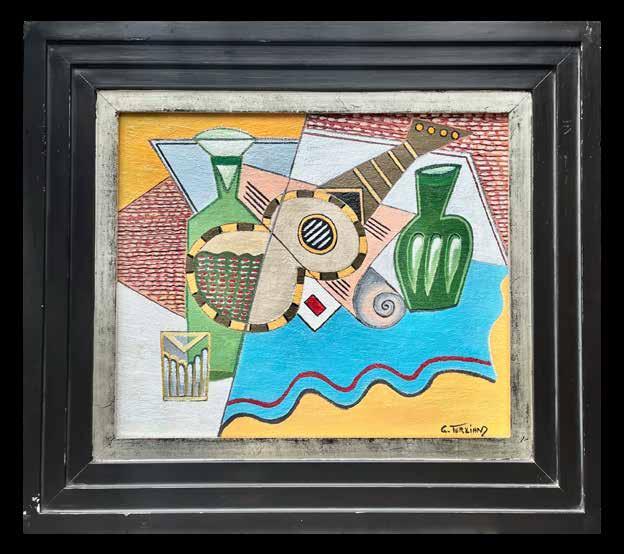
38 x 46 cms / 15 x 18 inches
La Petite Guitare Oil on Panel
$9,250
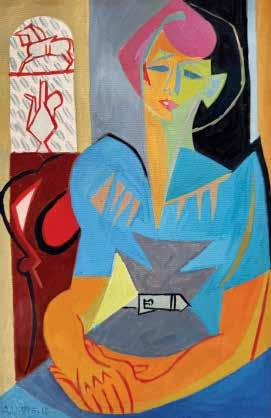
André LHote
French, (1885-1962)
Solitude en Bleu
Gouache and Watercolour on Paper
38 x 25 cms / 15 x 9¾ inches
$26,000
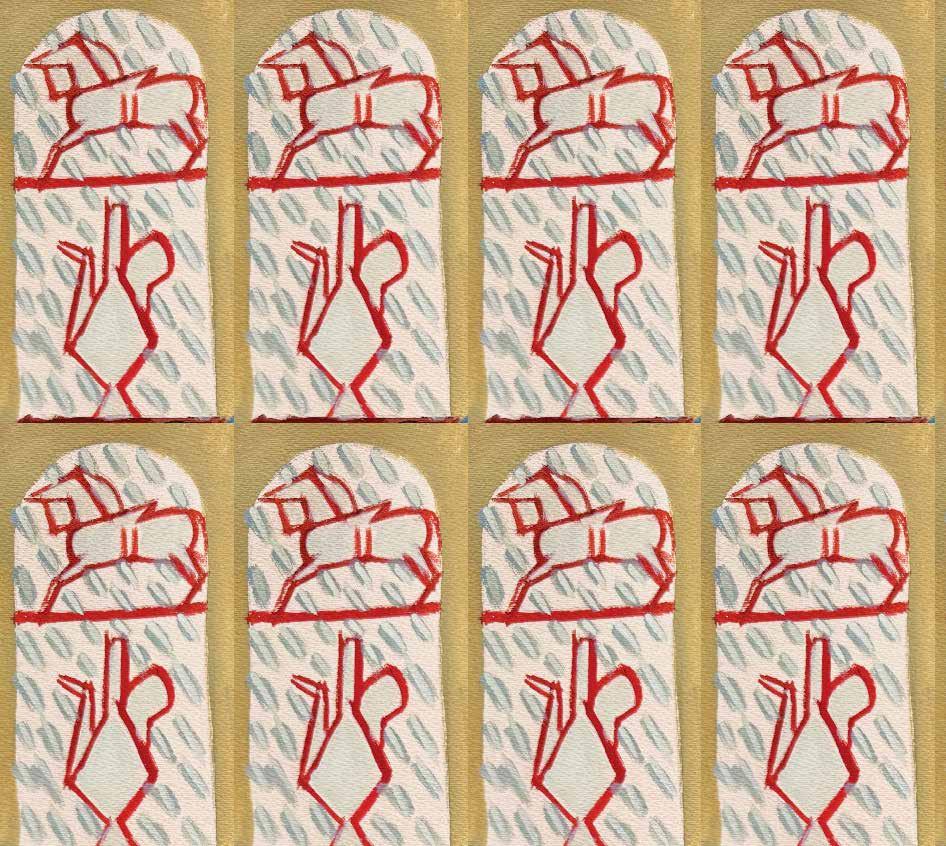
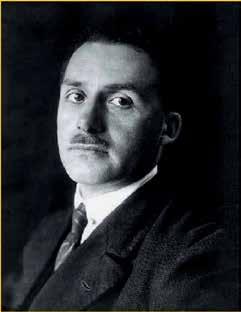
With angular grace and a palette of cool restraint, Solitude en Bleu exemplifies André Lhote’s refined interpretation of Cubism at mid-century. Painted in 1948, this portrait of the artist’s wife and muse, Marguerite Hayet, captures not only the geometry of form but the stillness of introspection. Her tilted head, elongated neck and folded hands form a rhythmic arrangement of intersecting planes, softened by harmonies of blue, ochre, rose and sage.
Lhote’s early training as a woodcarver and decorative sculptor is evident in his structural approach to the figure. He studied at the École des Beaux-Arts before settling in Paris, where he became one of Cubism’s most articulate and enduring proponents. A founding member of the Section d’Or and a committed teacher, Lhote sought balance and legibility in his abstractions, favouring clarity over fragmentation.
The composition is grounded by subtle domestic elements: a red chair, and behind the sitter, two simplified objects - a sculpture of a horse and a jug - arranged on shelves within the interior setting. Solitude en Bleu stands as a serene and elegant expression of Lhote’s mature style: a synthesis of intimacy and order, of Cubist structure and human depth.
Yvon Grac French, (b. 1945)
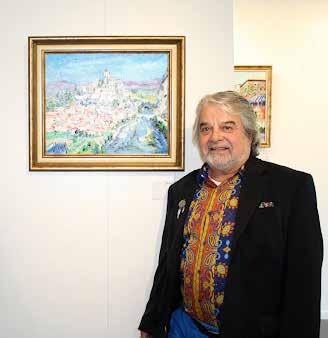
Yvon Grac is a French painter who was born in 1945, in Nice. He is a highly respected artist who is known for his bold and dynamic use of colour, which is intended to evoke joy, happiness, and positivity in his viewers. Having studied in Nice, Grac also elected to establish his studio there, where he draws inspiration from the natural beauty and vibrant culture of the region.
Grac's paintings are characterised by their cheerful and lively aesthetic, with bright colours and whimsical motifs that convey a sense of joy and spontaneity. His use of colour is particularly striking, with saturated hues and vibrant contrasts that create a sense of movement and energy. His distinctive style has earnt him the nickname ‘the painter of joie de vivre and happiness’ in his native France.
Although Grac is primarily known for his paintings, he has also worked in other mediums, including sculpture and printmaking. His art is often described as having a very personal style, with a unique and recognisable aesthetic that sets him apart from other contemporary artists.
Grac has exhibited his work extensively throughout France and abroad, with shows in many countries around the world. He is highly regarded in the art world, and his paintings are sought after by collectors and enthusiasts alike. His works are a testament to the power of colour and creativity to uplift and inspire, and they continue to captivate audiences with their unique and joyful spirit.
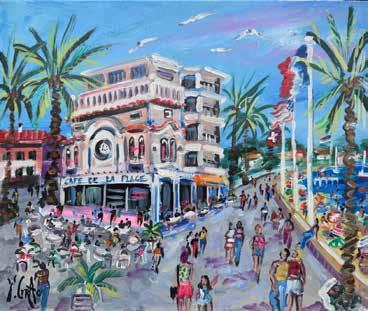
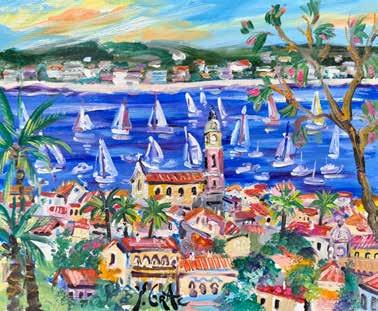
45 x 55 cms / 17¾ x 21¾ inches
$6,000
50 x 61 cms / 19¾ x 24 inches
$6,000
L'été à Juan Les Pins
Oil on Canvas
Régates à Saint Tropez
Oil on Canvas
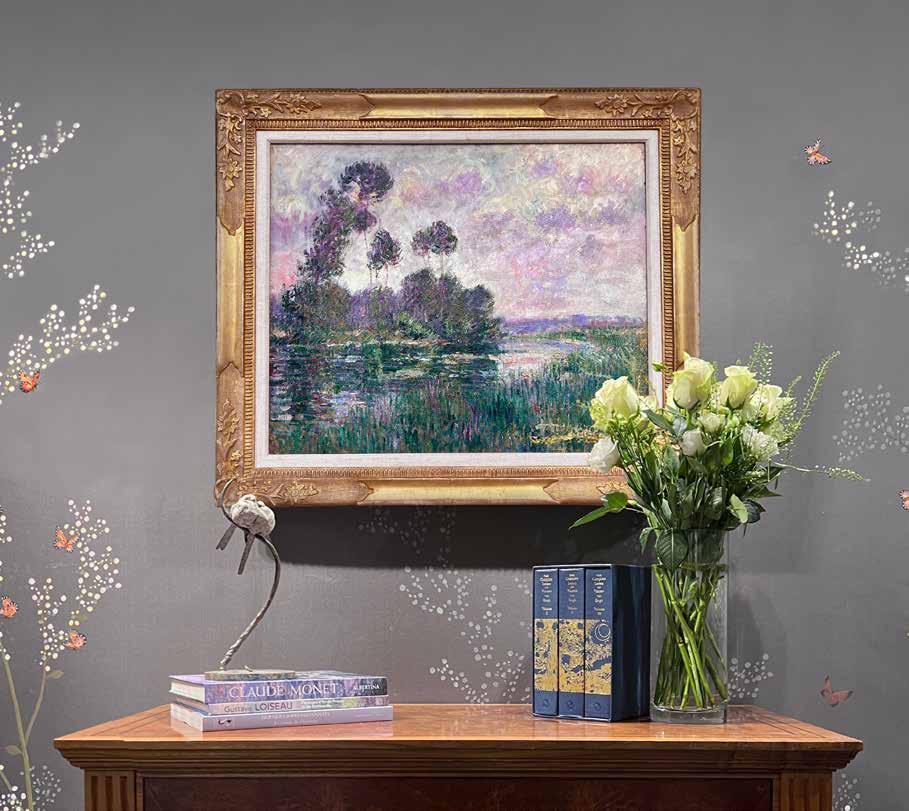
Gustave Loiseau
French (1865-1935)
Rivière en Normandie
Painted in 1913
Signed ‘G Loiseau 1913’ (lower right)
Oil on Canvas
54 x 65 cms / 21½" x 25¾"
Price on Application
Provenance
Galerie Félix Vercel, Paris.
Private Collection, Paris; acquired from the above.
Private Collection, by descent from the above.
Sale; Artcurial, Paris, 4th December 2012, lot 65.
Private Collection, acquired at the above sale.
Sale; Sotheby’s, London, 1st Mar 2018, lot 367.
Private Collection, UK; acquired from the above.
The authenticity of this work has been confirmed by Didier Imbert and this work is issued with a certificate of authenticity
Bespoke Wallcovering by Fromental
Gustave Loiseau
French (1865-1935)
Amongst Gustave Loiseau’s oeuvre, no river had a greater influence upon both the artist’s early development and mature mastery than the Eure, and no subject had a greater impact than poplars by a riverside. When Loiseau combined the two: masterpieces such as the stunning Rivière en Normandie inevitably followed. A crucial precondition for the creation of a masterpiece is unparalleled knowledge of subject matter; an artist is rarely able to produce their best works without this understanding. As Monet developed his poplars and waterlilies in a process of continual refinement, so too did Loiseau return to the Eure annually to perfect his paintings. Yet where Monet’s series of paintings largely capture a single point in the artist’s stylistic development, Loiseau’s treatments of the Eure chart the evolution, and culmination, of an entire career.
In fact, while Loiseau is well known for his diverse travels, he would visit the river every year from 1899 to 1932, more than any other location: it is evident that he considered it his best subject, a place in which he felt comfortable truly experimenting. At the start of his career, its riverbanks provided the setting for Loiseau’s richly textured, Pissarroinspired brushwork to emerge and take Paris by storm, and in 1913 the Eure bore witness to an equally startling transformation. Spearheaded by works like Rivière en Normandie , Loiseau initiated a campaign of unprecedented colour and expressive brushwork that saw him elevate his technique to new heights.
Painting the river in all seasons and conditions, Rivière en Normandie uniquely captures the complex purple hues of the early evening. The broad expanse of the Eure in the foreground delights the senses as Loiseau superbly captures the rippling effect of wind across the surface of the water, balanced against the movement of the rolling clouds to imbue the painting with an electric energy. Swift brushstrokes dance across the canvas, conveying the deep purples, saturated greens, and bright whites which stand out for their intensity even within the context of Loiseau’s love of saturated colour. Marking a turning point as the artist began to adopt a much freer pictorial approach, Rivière en Normandie is the result of Loiseau working with supreme confidence and skill, a celebration of colour and movement at the apex of his craft.
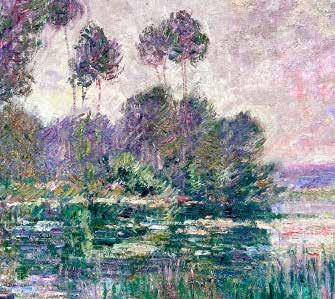
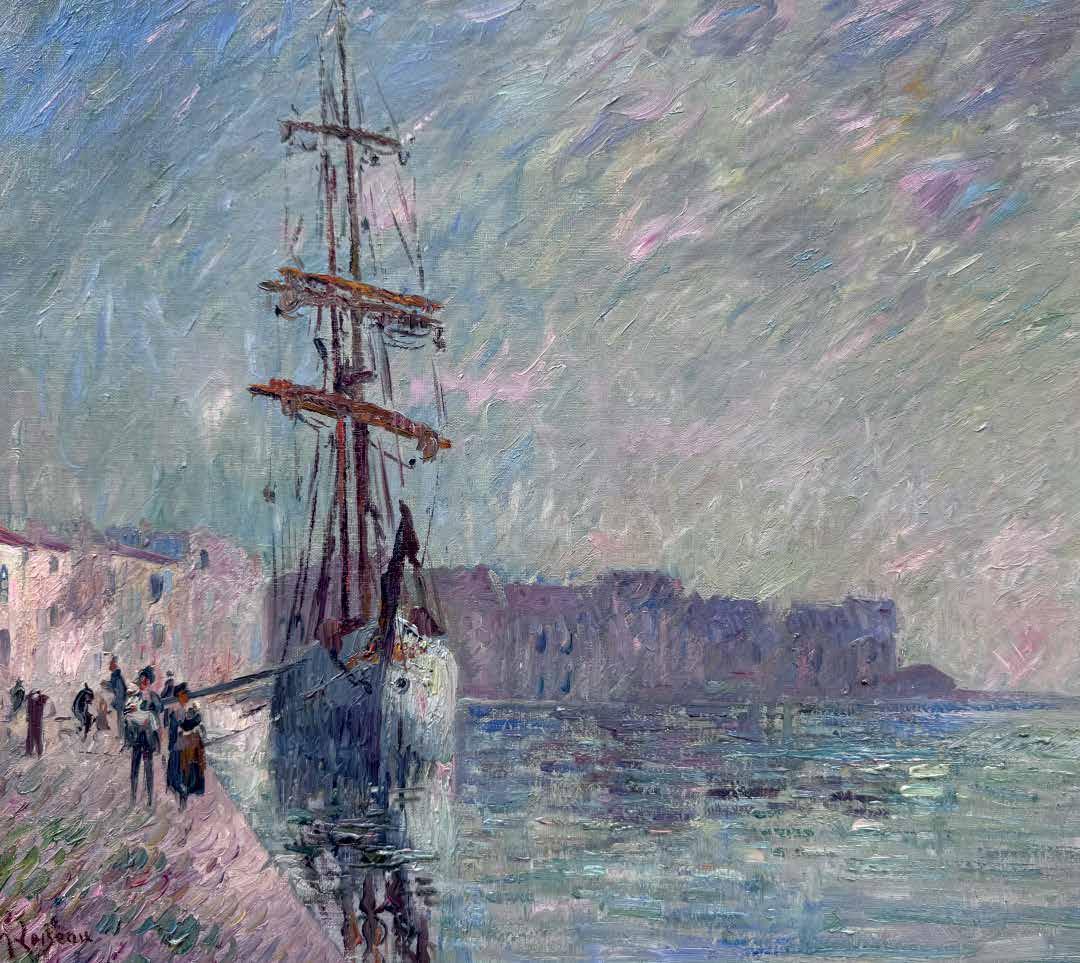
Gustave Loiseau
French (1865-1935)
Voilier dans le Port de Ferrière, les Martigues
Painted circa 1913
Signed ‘G Loiseau’ (lower left)
Oil on Canvas
46 x 54.8 cms / 18 x 21½ inches
$ 170,000
One of the foremost Post-Impressionist painters, Gustave Loiseau was profoundly influenced by the great masterpieces of the Impressionists. A champion of painting the landscape en plein air , Loiseau embraced the use of bold colour as he explored and expanded the Impressionist style. Encouraged to paint Martigues by one of his greatest advocates, Pierre-Auguste Renoir, Loiseau ventured from northern France to the idyllic Mediterranean coast in around 1913.
Voilier dans le Port de Ferrière, les Martigues is a captivating depiction of the port. At the water’s edge, the prow of a fishing boat reaches towards the viewer. Feather-quick, angular brushwork carves the pebbled path of the promenade, upon which figures stroll towards us in gentle clutter of dark, rustic hues. The strokes of the sky arc and roll, as if the scene exists inside a pearl. Finally, as the anchor of the painting in its atmosphere and colour, the sea sways in its elongated and textured dashes: tremulous, iridescent, and tranquil.
Voilier dans le Port de Ferrière, les Martigues recalls the atmospheric qualities of the artist’s familiar depictions of the seaside towns and ports of Normandy. The allure of Martigues, with its unique blend of pastel hues and intricate waterways, encouraged Loiseau to explore this new environment, marked by the pastel tones and diffused light. Loiseau captures the melancholic serenity of this setting in his favoured kaleidoscope of delicate indigo, aquamarine, and blush, applied with a much freer pictorial approach, characterised by a looser application of paint and a turn towards increasingly intense pigments. The result is a powerfully atmospheric seascape, painted at the height of Loiseau’s career as the artist is developing into the Post-Impressionist master for which he is renowned.
Gustave Loiseau
French (1865-1935)
Glaçons sur l’Oise
Painted in 1914
Oil on Canvas
60 x 81 cms / 23½ x 32 inches
$125,000 A frozen hush lingers over the River Oise in Glaçons sur l’Oise , painted during one of the coldest winters in northern France. Loiseau presents a rare moment of stillness. The iron bridge of Pontoise anchored across the canvas, while the ice-laden surface of the Oise reflects a pale winter sky. On the far bank, the town is shrouded in quiet; rooftops and chimneys emerge through a veil of cold light, softened by the season’s stillness.
Painted in 1914, this work captures both a moment in nature and a point of rupture in time. That same year, France would enter the First World War. Loiseau’s painting portrays a world momentarily frozen, the calm before the storm. The Pointoise railway bridge would later be destroyed alongside many other canal bridges in the First World War to slow the advancing armies. This painting plays a significant role in the preservation of the French landscape prior to the war, adding a layer of historical resonance that deepens the quiet power held within the painting.
The painting was acquired directly from the artist in
1914 by the legendary dealer Durand-Ruel, who recognised its power and exhibited it in his gallery, a mark of its quality and of Loiseau’s standing among the most significant painters of his time.
Following the success of his first three exhibitions with Durand-Ruel, Loiseau acquired land in Pontoise in 1903, on the banks of the river Oise on the Quai de Pothuis where he proceeded to build his home and studio over the following two years. Pontoise would become an anchor throughout the artist’s life and career, and where he would return in the winter, having travelled extensively during the summer months in Normandy, Brittany and the Dordogne, seeking out suitable subject matters.
At Pontoise, Loiseau followed in the footsteps of Camille Pissarro and Alfred Sisley but forged a distinctive path of his own. Throughout the 1910s Loiseau developed his signature technique, known as en treillis or cross-hatched brushwork, which lends the surface a rhythmic vitality. In Glaçons sur l’Oise , he applies this with particular delicacy: cool greys and icy blues intersect with mauves and soft creams, creating a luminous, almost tonal harmony.
As a key figure in Post-Impressionism, Loiseau balanced fidelity to the landscape with a deep sensitivity to the change of weather, time and atmosphere. He had little interest in grand subjects, preferring the everyday poetry of rivers, villages and rural life. This painting is a masterclass in restraint: quiet, contemplative and exquisitely observed. It is a rare opportunity to witness Loiseau at his most introspective, when even the river seems to pause and breathe.
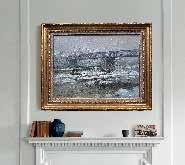
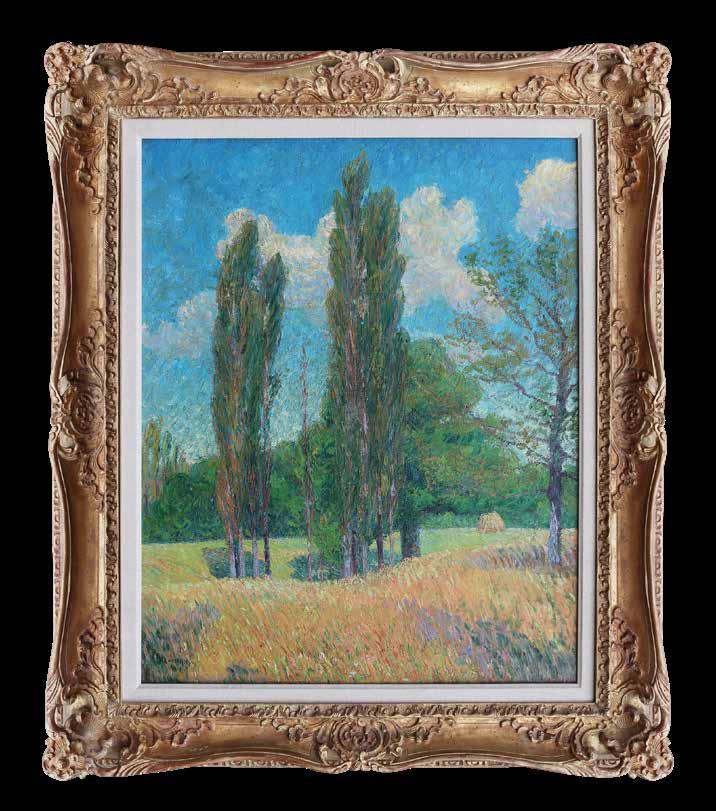
Gustave Loiseau
French (1865-1935)
Les Peupliers,1898
Signed ‘G. Loiseau’ (lower left)
Oil on Canvas
81 x 65 cms (32” x 25½”)
$ 350,000
Provenance
Durand-Ruel, Paris.
Private Collection, Switzerland.
Sale; De Quay-Lombrail, Paris, France, 7th December 1995, Lot 13.
Private Collection, New York.
Michelle Rosenfeld Gallery, New York.
Sale; Sotheby’s, New York, 14th May 1997, lot 147; sold by the above.
Private Collection, New York.
Gladwell & Patterson, London; acquired in May 2021..
Exhibitions
Galerie Durand-Ruel, Paris, E xposition de tableaux de M. Gustave Loiseau , 26th March – 9th April 1898.
This work is sold with a certificate of authenticity and will be included in the forthcoming Catalogue Raisonné being prepared by Didier Imbert.
Gustave Loiseau
French (1865-1935)
Les Peupliers,1898
Signed ‘G. Loiseau’ (lower left)
Oil on Canvas
81 x 65 cms (32” x 25½”)
Encouraged and fostered by the most important figures of the art world in the late nineteenth and early twentieth century, Loiseau painted this exquisite work at a pivotal point in his career, and it was subsequently included in his very first solo exhibition at Galerie Durand-Ruel. The brushwork and vibrant colours of Les Peupliers reveal Loiseau’s profound skill in capturing the ambiance of nature. The vibrating colour harmonies of the field of golden wheat and the gestural brushstrokes of the gently swaying poplars enliven this sun drenched pastoral scene.
The motif of the poplar tree would appear frequently throughout Loiseau’s oeuvre and some of his most famous and highly regarded works are a development of the poplars that Loiseau captured at Nesle-laVallée in this majestic Les Peupliers of 1898. The paintings of Loiseau’s later years are characterised by the systematic exploration of a series of views of the same subject, a method deeply indebted to Monet, most notably Monet’s series of twenty-four views of poplars on the bank of the Epte in the spring of 1891. Focused upon a single compositional device, as Monet had achieved before him, Loiseau thoroughly investigated the different atmospheric conditions of one view point or landscape, capturing his subject in contrasting seasons.
Identifiable through a rich surface, composed using spontaneous brushwork as the pigment is layered upon the canvas, Les Peupliers reveals the artists experimental nature and exemplifies Loiseau’s instinctive use of both Impressionist and Post-Impressionist techniques in his quest to capture nature as he experienced it en plein air
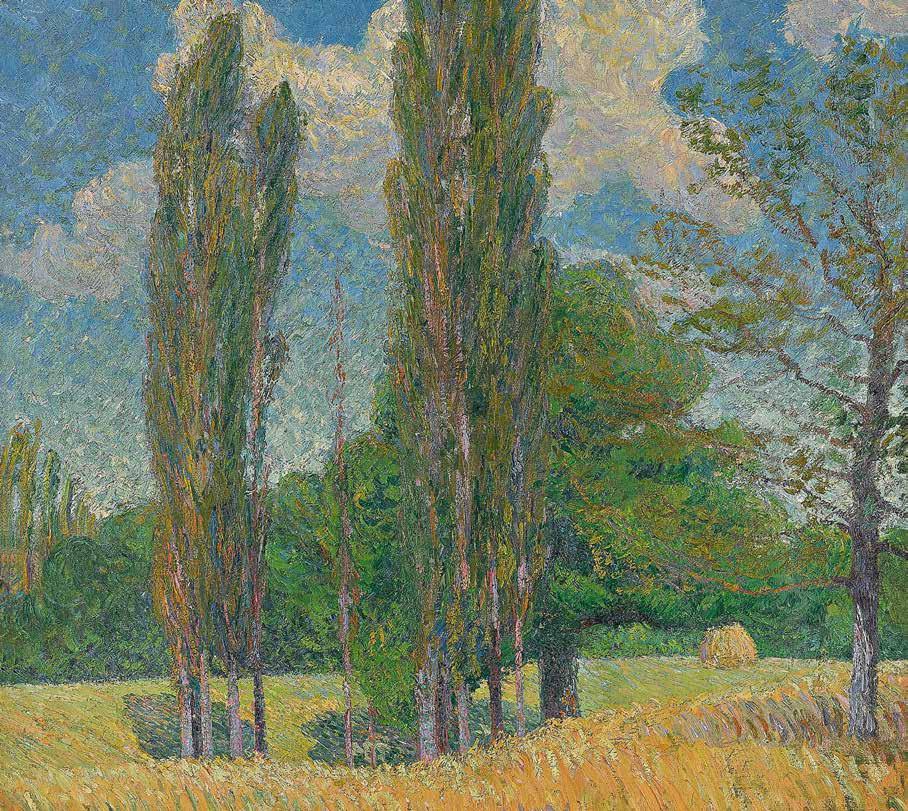
Jean lafon
French, (1886-1973)
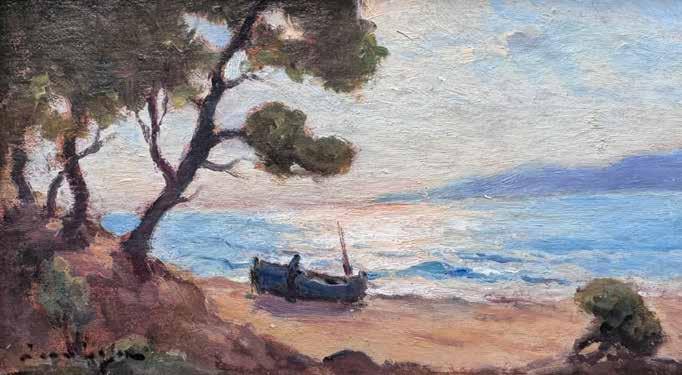
13.5 x 23 cms / 5¼ x 9 inches
Coucher de Soleil sur la
Riviera
Oil on Board
$950
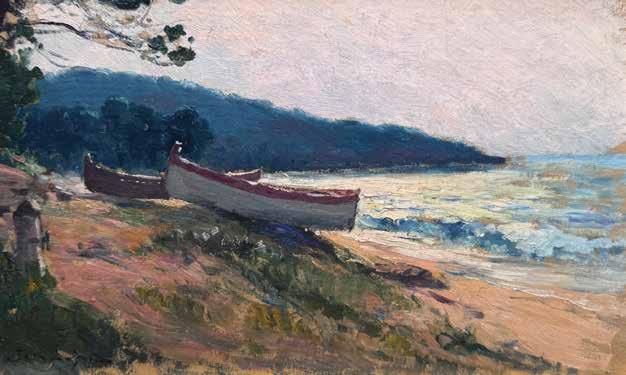
22 x 35 cms / 8¾ x 13¾ inches
Elements Oil on Board
$1,950
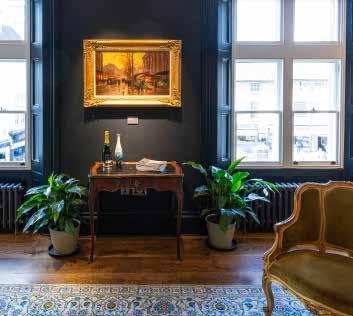
Édouard Cortès
French, (1882-1969)
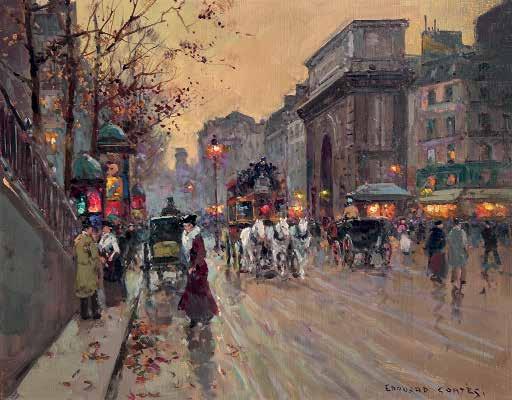
Left: Marché aux Fleurs, Place de la Madeleine, Paris
Oil on Canvas
46 x 76 cms / 18 x 30 inches
£89,500
Porte St. Martin
Oil on Canvas
46 x 61 cms / 18 x 24 inches
$75,000
Édouard Cortès
French, (1882-1969)
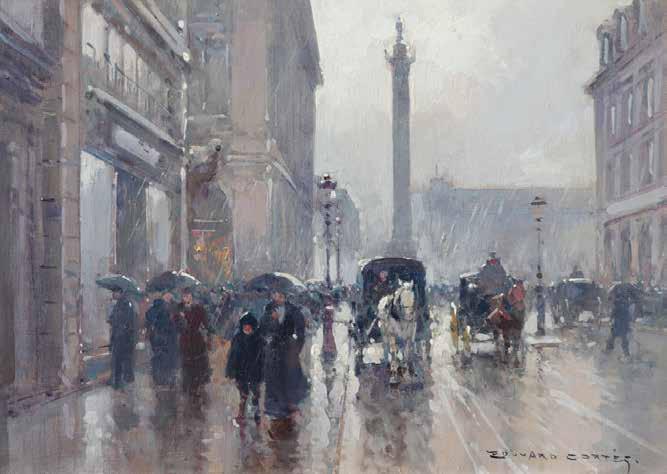
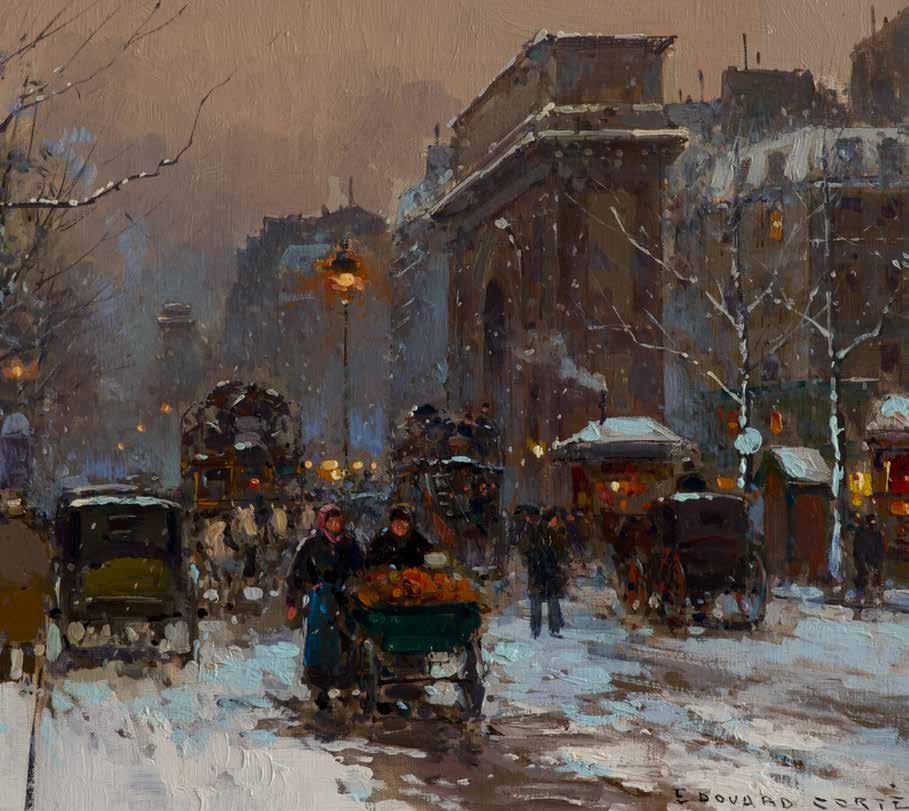
33 x 46 cms / 13” x 18”
$80,000
Rue de la Paix, Paris Oil on Canvas
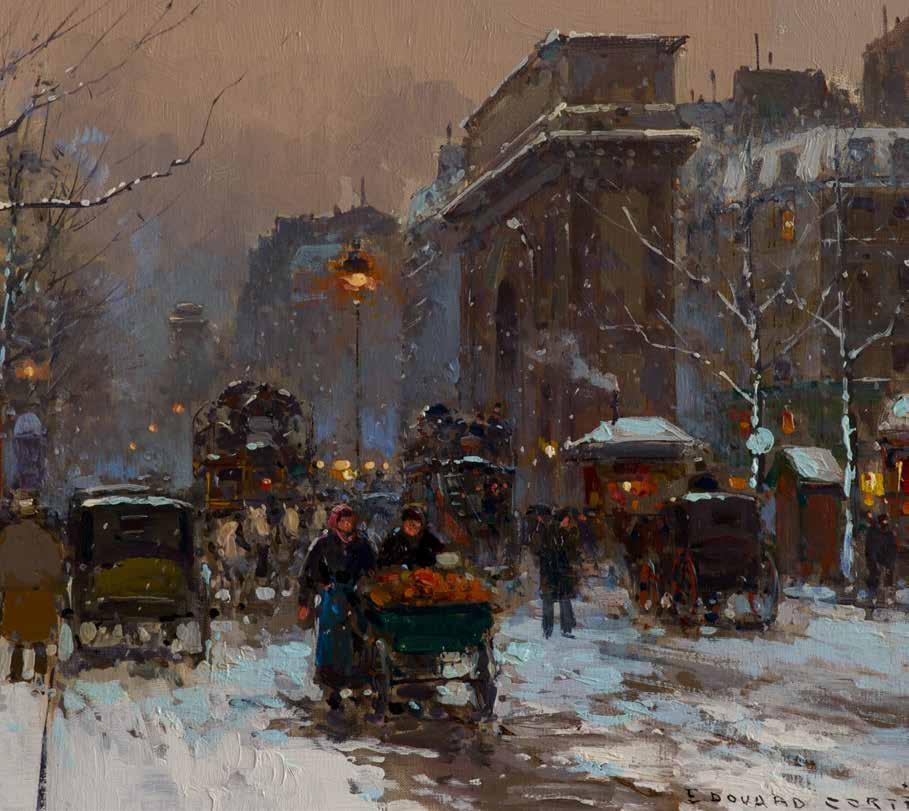
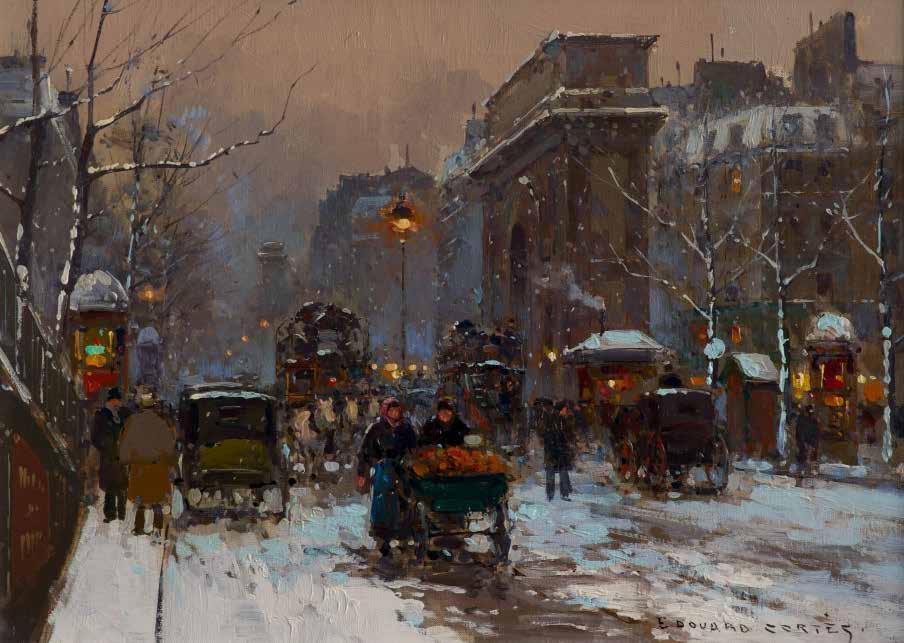
Porte St. Denis, Paris Oil on Canvas
33 x 46 cms / 13” x 18”
$80,000
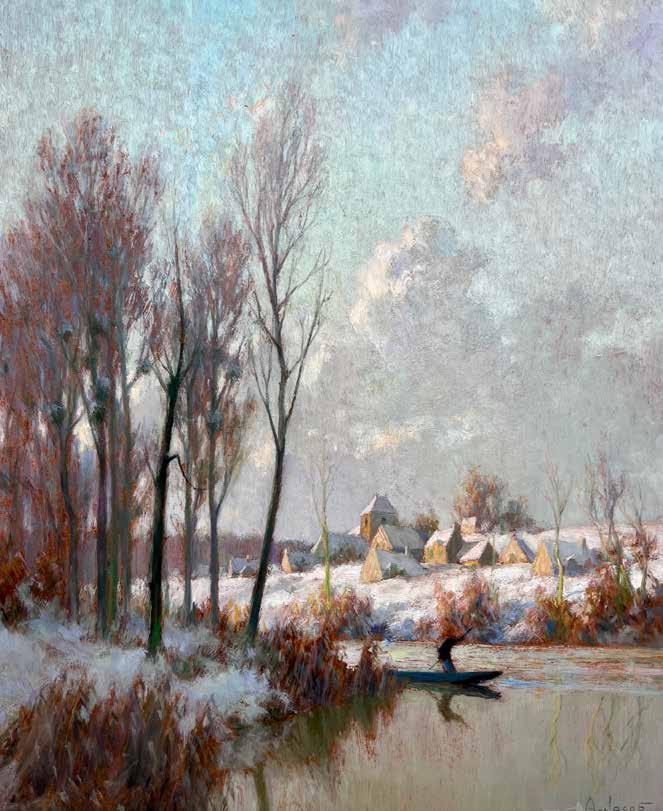
Alexandre Louis Jacob
French (1876-1972)
Neige et Soleil, bord de Marne
Oil on Canvas
46 x 38 cms / 18 x 15 inches
$16,500
Celebrated for his tranquil landscapes of northern France, Alexandre Louis Jacob is an artist whose legacy is deeply intertwined with our gallery’s esteemed history. Initially discovered by Herbert Fuller, Cory and Glenn’s grandfather, at the Paris Salon after World War II, almost 75 years later, his work remains a constant source of delight to all those that encounter Gladwell & Patterson, in the UK or overseas.
Jacob’s Aube d’Hiver is a mesmerising portrayal of the French countryside at dawn. This winter landscape reflects Jacob’s penchant for capturing the ephemeral qualities of light, a signature element that permeates much of his work. The sky dominates the composition, stretching across the canvas with a soft orange glow.
Jacob’s masterful handling of the early morning light infuses the scene with a sense of quiet anticipation, as if the day itself is holding its breath, waiting for the world to come alive.
Jacob invites the viewer to pause and appreciate the simple, yet profound, moments that make up the tapestry of everyday existence. Through his skilful use of light and colour, Jacob creates a landscape that is both intimate and expansive, capturing the timeless beauty of the French countryside at the break of day.
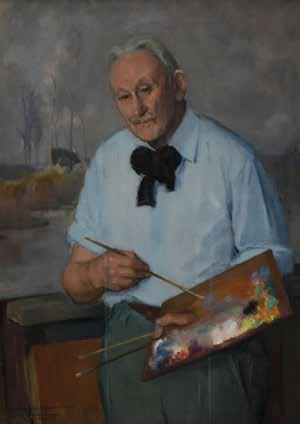
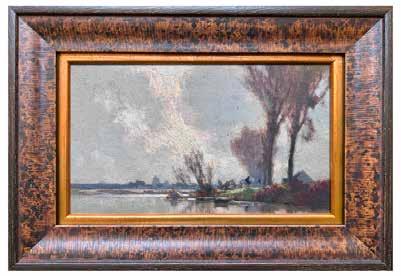
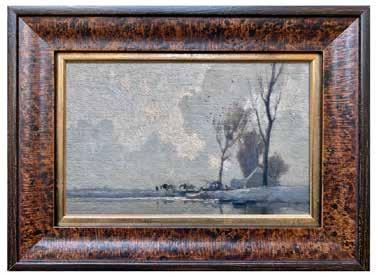
Alexandre Louis Jacob French (1876-1972)
Riverscene with Horse and Waggon
Oil on Panel
14 x 22.9 cms / 5½ x 9 inches
$5,950
Riverscene with Two White Horses towing beside River
Oil on Panel
14 x 22.9 cms / 5½ x 9 inches
$5,950
Maison au Ruisseau sous la Neige Oil on Board
45 x 36 cms / 17¾ x 14¼ inches
$16,500
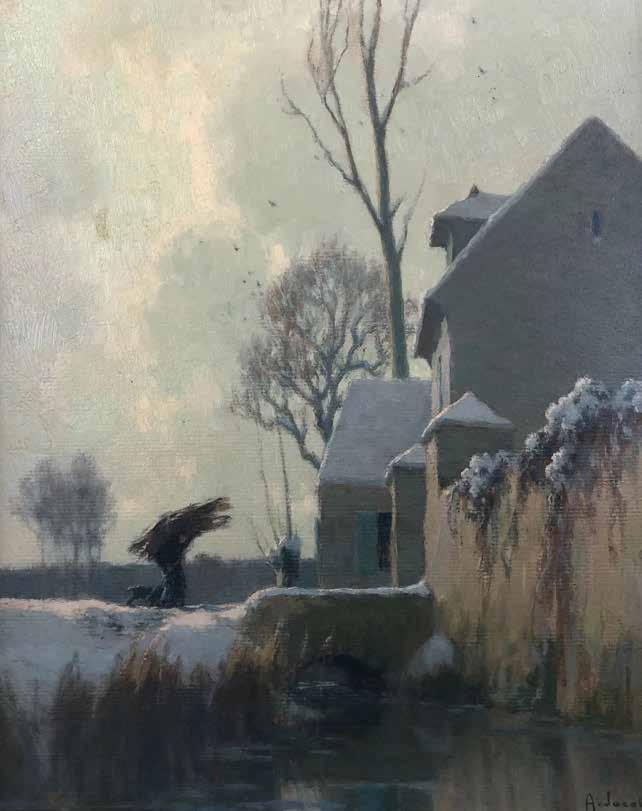
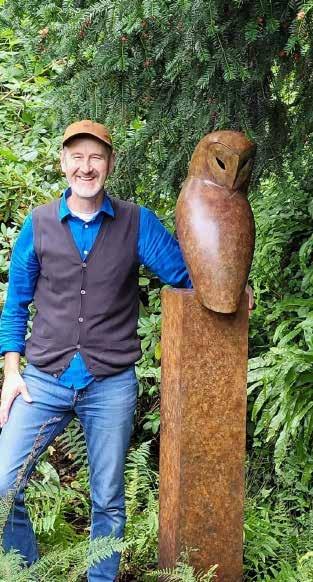
Anthony Theakston
British (Contemporary)
Known for his distinctive style and profound appreciation of the natural world, Anthony Theakston has carved a unique niche in British contemporary sculpture. His work is celebrated for its graceful forms, meticulous craftsmanship, and an emotive resonance that transcends mere representation.
Each sculpture is a testament to his skill and vision, capturing the essence of his subjects with elegance and subtlety. Theakston’s sculptures often draw inspiration from avian forms, showcasing his fascination with the grace and fluidity of birds in motion. His ability to distil the essence of these creatures into simplified, abstracted forms is nothing short of remarkable.
Theakston works in his studio overlooking views of the River Trent and British farmland; a landscape that never ceases to inspire. Quick, rough sketches of direct observations from nature are rapidly transformed into a myriad of shapes and elegant lines. Before casting his sculptures in bronze, Theakston hews his models out of blocks of plaster in a reductive process.
The bronze medium, with its rich history and enduring qualities, allows Theakston to imbue his sculptures with a timeless presence. His meticulous attention to detail and the tactile quality of his work invites viewers to engage with each piece on a sensory level. Cast at the worldrenowned bronze foundry Castle Fine Arts Foundry in Wales, the patinas Theakston employs add depth and character, enhancing the organic feel of his sculptures.
As one of the UK’s leading sculptors, we are delighted that Anthony is part of the Gladwell & Patterson’s family of highly talented artists. His distinctive bronze masterpieces are inspired by the sculptural shape, elegance and movement of the bird form using angular and geometric shapes and sit harmoniously in the home and in the outdoors alike.
Stealth
Bronze, Edition 11 of 12
40 x 36 x 11 cms / 15 ¾ x 14 ¼ x 4 ¼ inches
$9,250
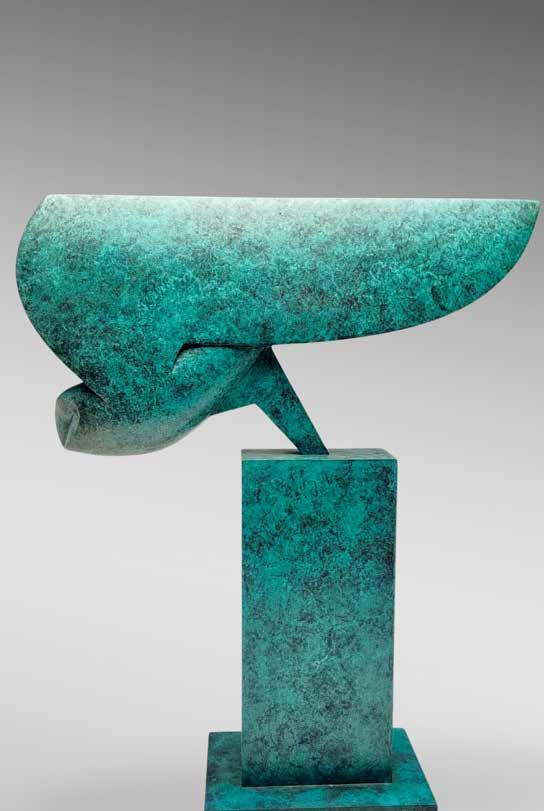
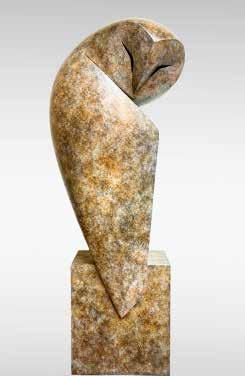
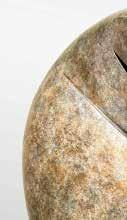
Bastion Original
Bronze, Edition 12 of 12
72.5 x 27 x 21.5 cms / 28½ x 10½ x 8½ inches
$13,500
Anthony Theakston British (Contemporary)
“My art and activity is a continued process of distilling, where ideas and feelings are concentrated, refined and simplified until, if successful, they have a purity which is no longer about me or the design or the age we inhabit.”
- Anthony Theakston, 2019
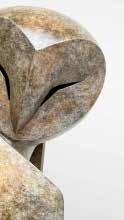
Serenity
Bronze, Edition 3 of 12
70 x 15 x 15 cms / 27 ½ x 6 x 6 inches
$13,500
Serenity
Bronze, Edition of 12
43 x 9.5 x 9.5 cms / 17 x 3 ¾ x 3
$8,950
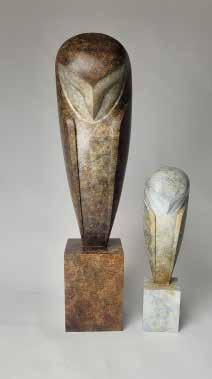
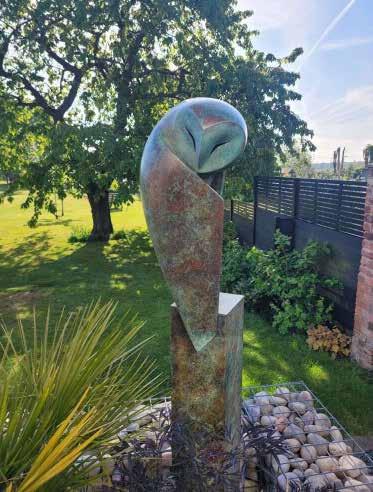
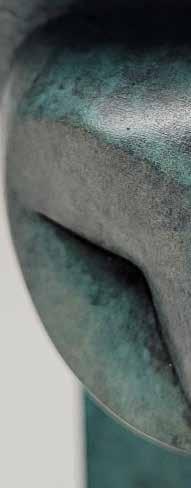
Original Bastion Large
Bronze, Edition of 12
72.5
$13,000
x 27 x 21.5 cms
28½” x 10½” x 8½”
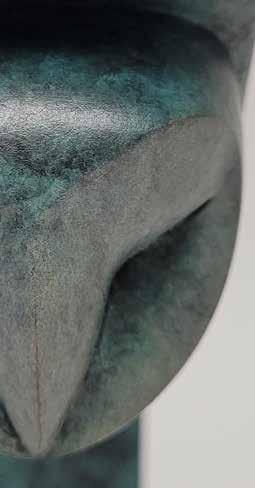
Edition 11 of 12
x 36 x 11 cms / 15 ¾ x 14 ¼ x 4 ¼ inches $8,950
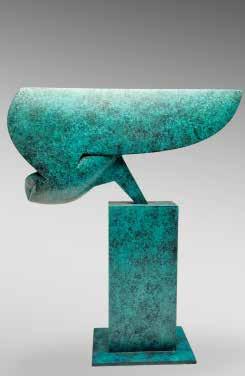
Anthony Theakston
British (Contemporary)
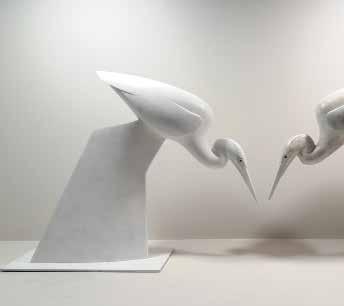
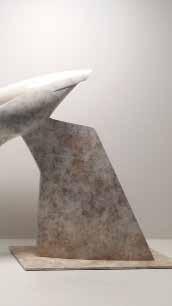
British (Contemporary)
Heron, 2025
Bronze, Edition 7 of 12
30 x 38 x 11 cms / 11 ¾ x 15 x 4 ¼
$ 6,000
Stalking
Anthony Theakston
Winged Sideways
Bronze, Edition 8 of 12
68 x 52 x 15 cms / 26 ¾ x 20 ½ x 6 inches
$12,000
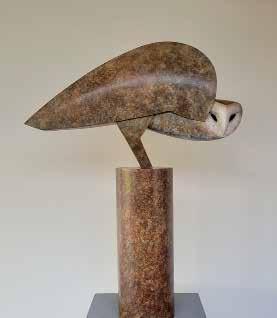


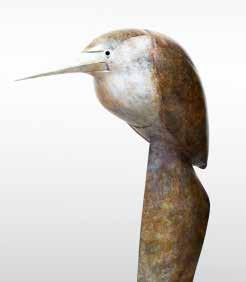
Bronze, Edition 3 of 12
x 38 x 14 cms / 17 x 15 x 5½ inches
Bittern
43.5
$11,250
Anthony Theakston
British (Contemporary)
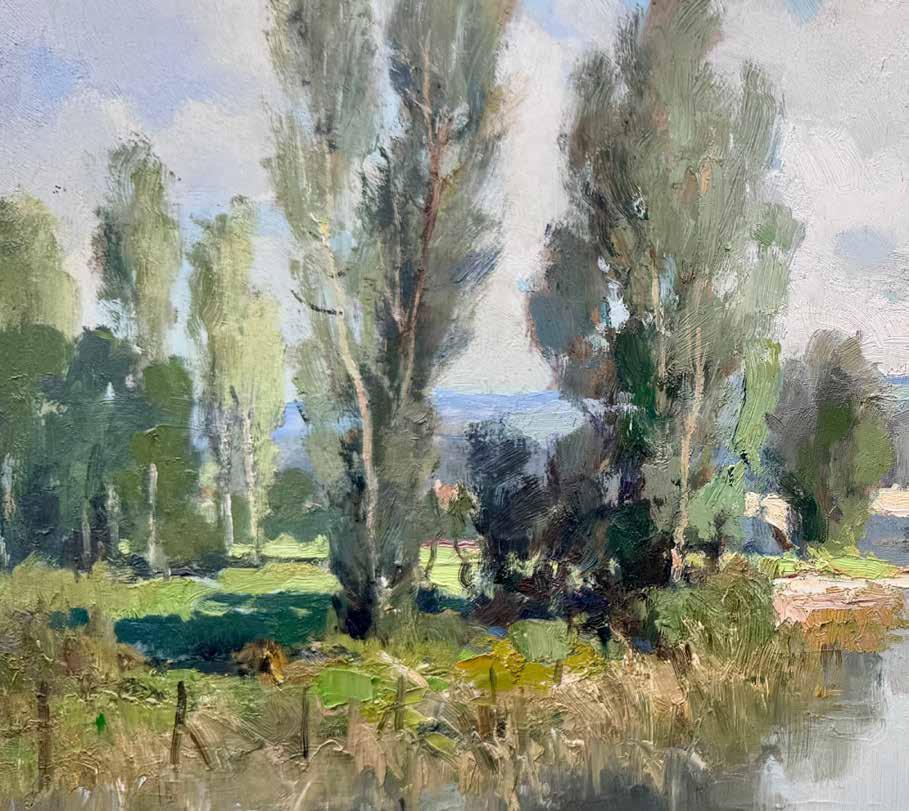
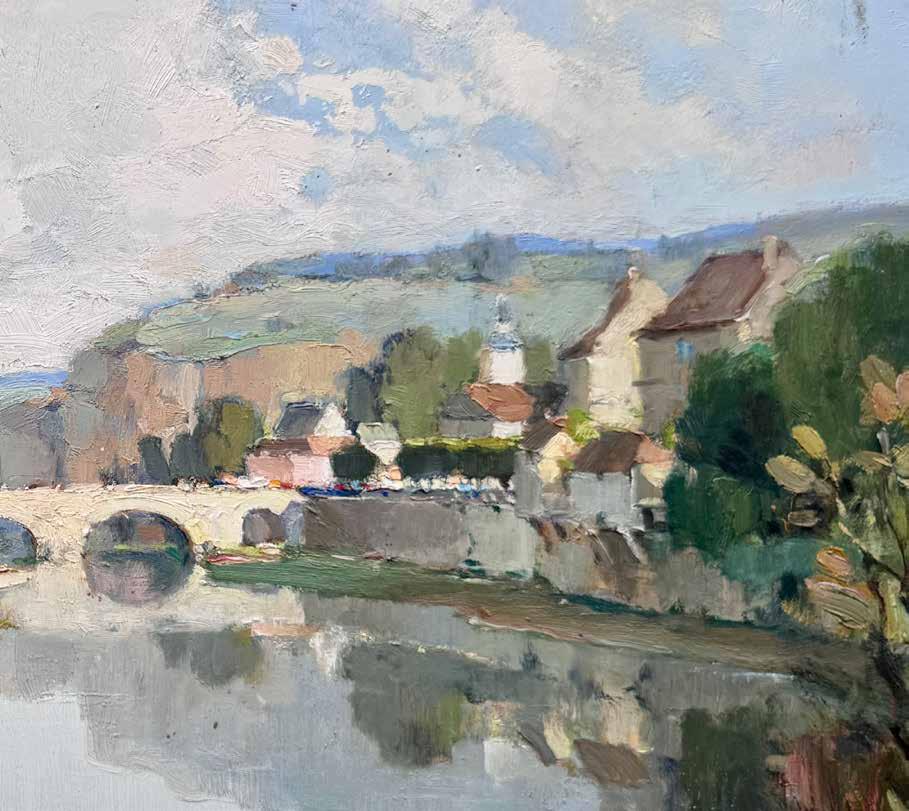
Georges Charles Robin French (1903-2002)
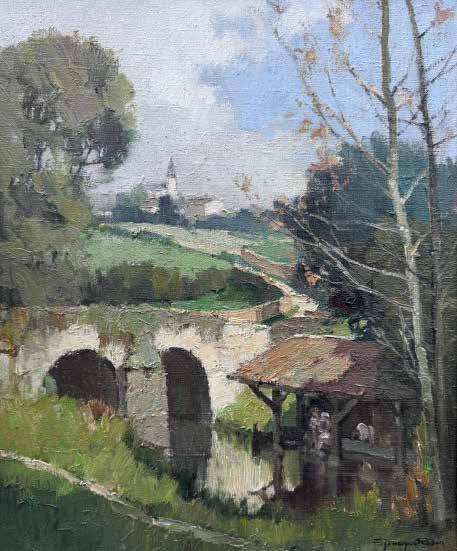

17,500
La Vieux Lavoir
Oil on Canvas
46 x 38 cms / 18 x 15 inches
$
Georges Charles Robin
French (1903-2002)
Georges Charles Robin (1903-2002) was born in Paris. He studied at École des Beaux-Arts under the master painter Paul Michel Dupuy, a noted artist whose paintings are to be found in the collection of the Musée du Louvre. Robin went on to become a well-known decorative artist, before securing a job as the scenery artist for the Charleville Theatre and the Dinan Casino.
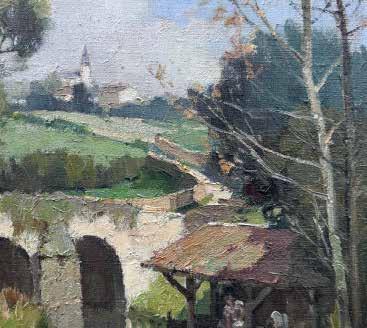
Robin lived in the affluent suburb of Rueil Malmaison on the western outskirts of Paris throughout his life. The summer months were often spent near Morlaix in Brittany where Robin had a second home; there he would capture idyllic seascapes and charming river estuaries bathed in sunshine. However, throughout Robin’s career the Loire Valley and the Dordogne region inspired his greatest works.
Enthralled by the enchanting river valleys of rural France that flowed through the luxuriant countryside and rolling fields, Robin’s paintings perfectly capture rural French life. Recognised as one of the best, but largely undiscovered, Post-Impressionist artists of the twentieth-century, Robin’s skill and complete command of his palette set him aside from his contemporaries.
Following the ‘en plein air’ practice of the Impressionist masters, in a few swift brushstrokes Robin brought life to the trees and rivers of the French countryside. Robin was a master at capturing the change in temperature and atmosphere. His restrained use of colour allowed him to capture a warm summer’s afternoon or a blanket of snow with profound skill. Combining his deft and delicate touch with vigorous, dramatic brushstrokes and palette knife work, he produced exceptional landscapes. Robin's skill in emphasising nature's basic structure and his sympathetic interpretation using pure colouring only enhances his total control of the medium of oil paint. His love of nature in all her moods inspires a fine sense of permanence in his craft and his treatment of the rustic architecture that exists in many of the towns and villages of France is unrivalled.
Robin was a member of the Salon des Artistes Français, the Salon des Paysagistes Français, and the Society of Arts, Science and Letters. He was an officer of the Académie des Beaux Arts, director of the Institute of “Instruction Publique”, and a former Professor of the Technical High School. He was highly lauded, achieving virtually every major award in French painting for his work, among which the Hors Concors stands out as one of the highest and most esteemed awards of an artist of the time.
Georges Charles Robin
French (1903-2002)
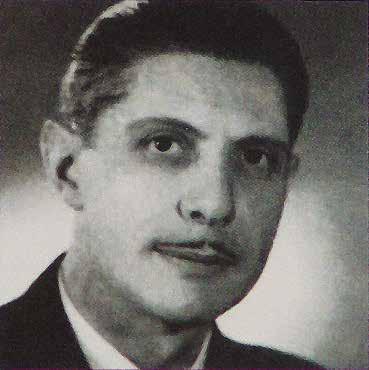
Gladwell & Patterson’s history with this distinguished artist began after the Second World War. Herbert Fuller of Gladwell & Company, London, discovered the landscapes of George Charles Robin in the Paris Salon in 1948 and approached the artist in his studio. Being in his fifties, Robin had already established himself as one of the foremost French artists of the day. Initially the artist was represented by Galerie Haussmann and Galerie Henault, but as his popularity grew, Gladwell & Company acquired paintings directly from the artist until he became blind in 1981.
For over seventy years, Robin's interpretation of the French landscape has never ceased to appeal to our clients and as a result we are extremely confident that we have found a Master artist whose reputation will grow with the passage of time very much like the Impressionists have over the last one hundred and fifty years. Robin’s paintings were acquired by the City of Paris, the City of Clichy, as well as by the French Government during his lifetime. Robin’s work is housed in important private and museum collections around the world. Since he first set eyes on Robin’s landscapes in Paris, Herbert Fuller, and the two subsequent generations of the Fuller family of Gladwell & Patterson have continued to share the legacy of this great artist. The gallery has both an outstanding library of his work and a highly cultivated knowledge of his practice. We are currently preparing a Catalogue Raisonné of his work.

Le Pont de Saint-Goustan, Auray
Oil on Canvas
60 x 81 cms / 23½ x 32 inches
$25,000
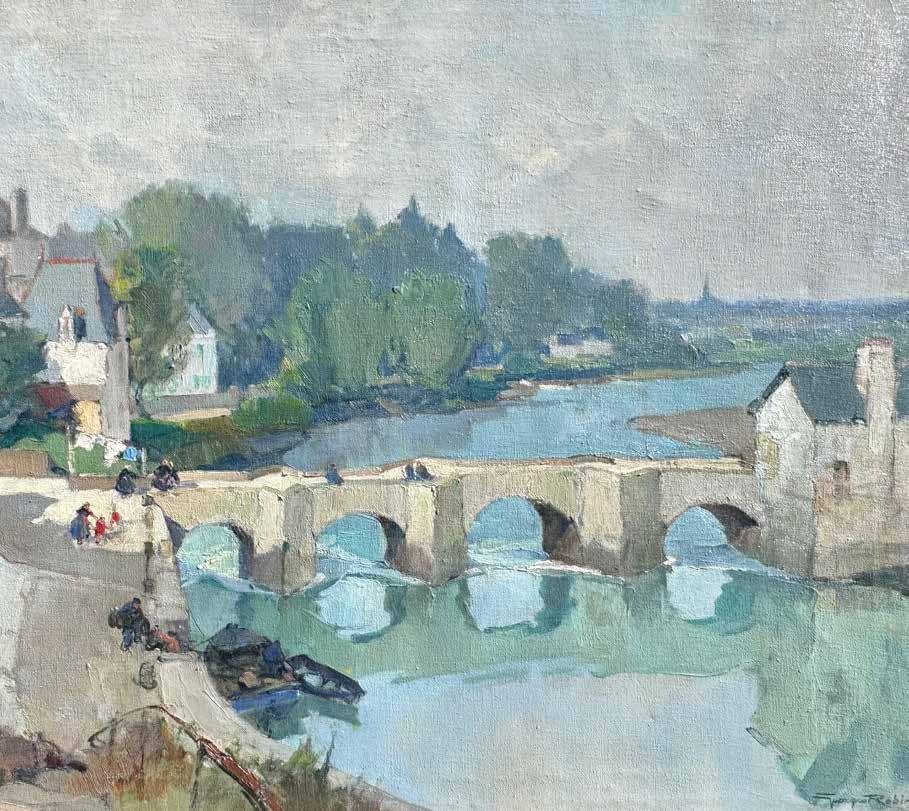
Georges Charles Robin
French (1903-2002)
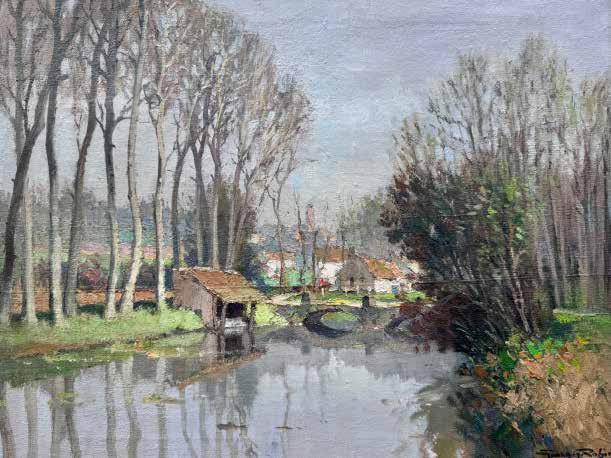
Sur le Fusain près de Château-Landon, c. 1970
Oil on Board
46 x 61 cms / 18" x 24"
$24,000
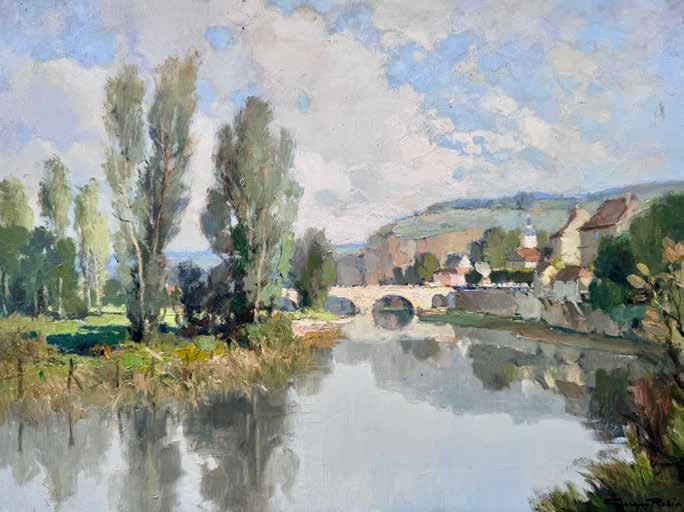
46 x 61 cms / 18" x 24"
$24,000
La Vézère au Bugue, Dordogne, c. 1960
Oil on Canvas
Georges Charles Robin
French (1903-2002)
Robin’s Awards and Honours
1948, French Landscape Prize, Paris Salon.
1948, Premier Prize, Salon des Paysagistes Français.
1954, Gold Medal, Paris Salon.
1954, Selected to be a member of the Jury, Salon des Paysagistes Français.
1954, Selected to be a member of the Jury, Salon d’Hiver.
1954, Selected to be a member of the Committee of Directors, Salon d’Hiver.
1954, Gold Medal, Salon des Artistes Français.
1954, Selected to be a member of the Jury, Salon des Artistes Français.
1954, Received the Hors-Concours, Salon des Artistes Français.
1954, Silver Medal, Salon des Artistes Français.
1958, Prize of the Town of Clichy.
1958, Prize of the Town of Asnieres.
1959, Premier Award, Salon du Printemps.
1960, Premier Award, Salon Levallois.
1961, Awarded Prix Taylor, Salon des Artistes Français.
1961, Awarded Bronze Medal, Salon des Artistes Français.
1961, Awarded Silver Medal, Conseil General de la Seine.
1961, Awarded Gold Medal, Société d’Arts, Sciences et Lettres.
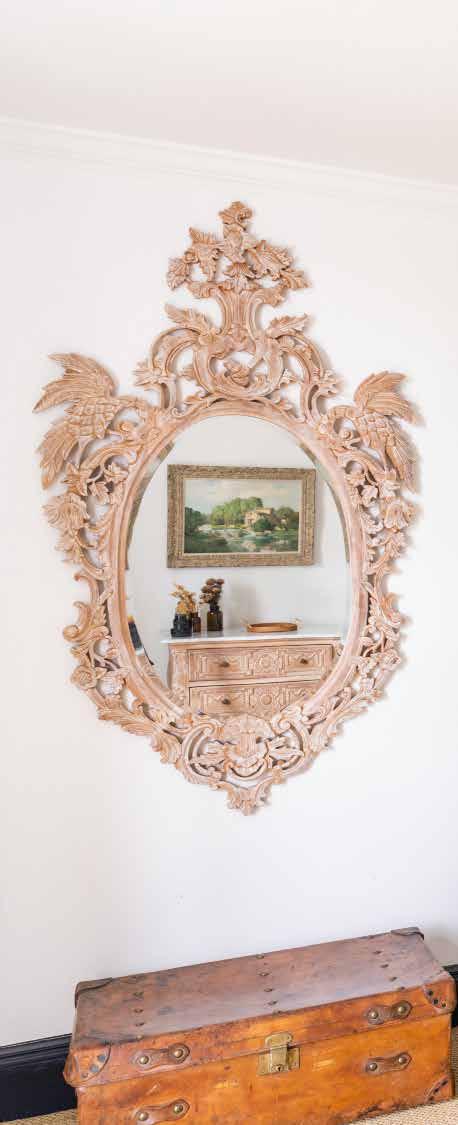
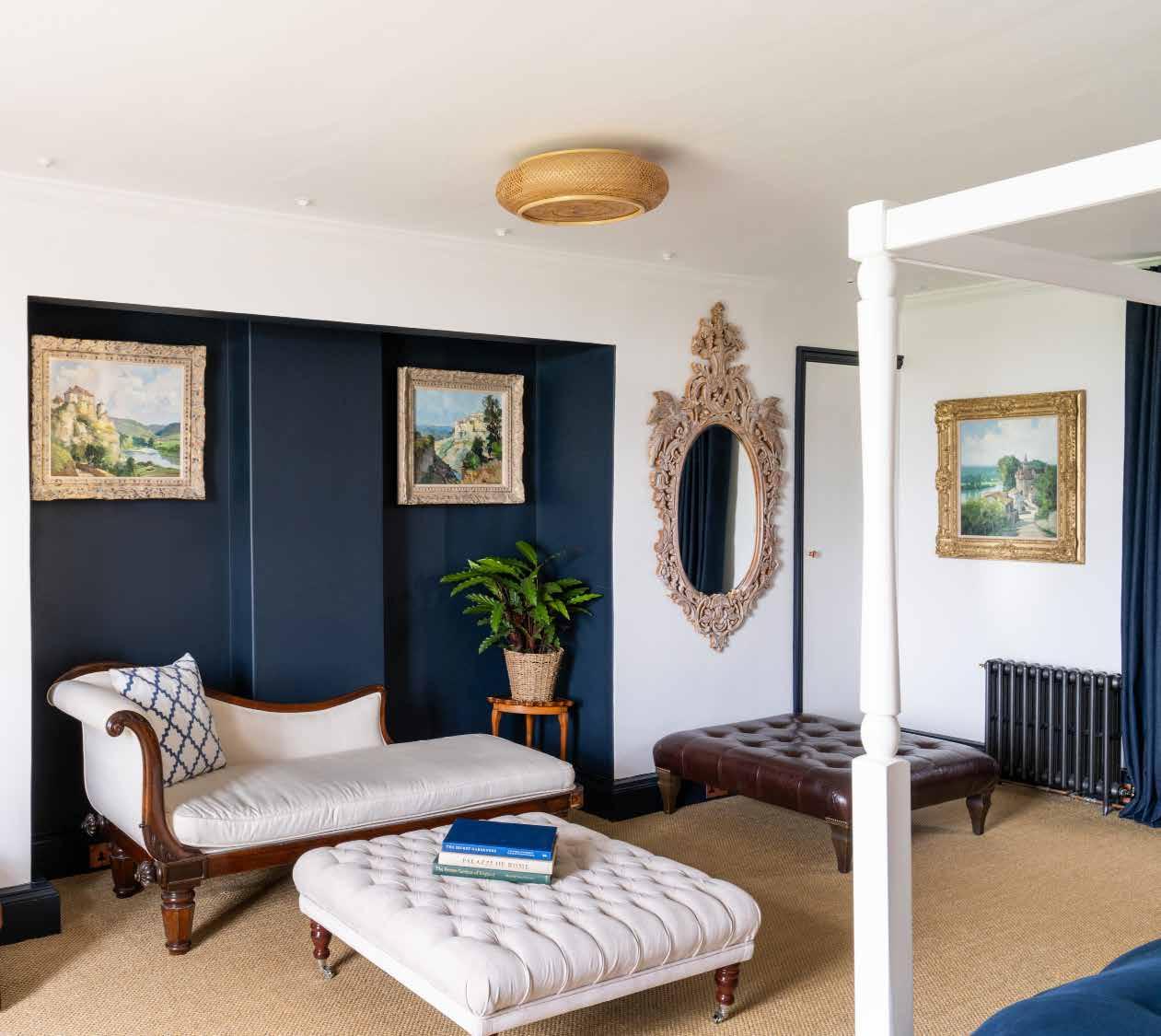
Georges Charles Robin French (1903-2002)
Oil on Canvas
52 x 71 cms / 20½ x 28 inches
$20,000

Saint-Laurent-sur-Sèvre, Paysage á Passard
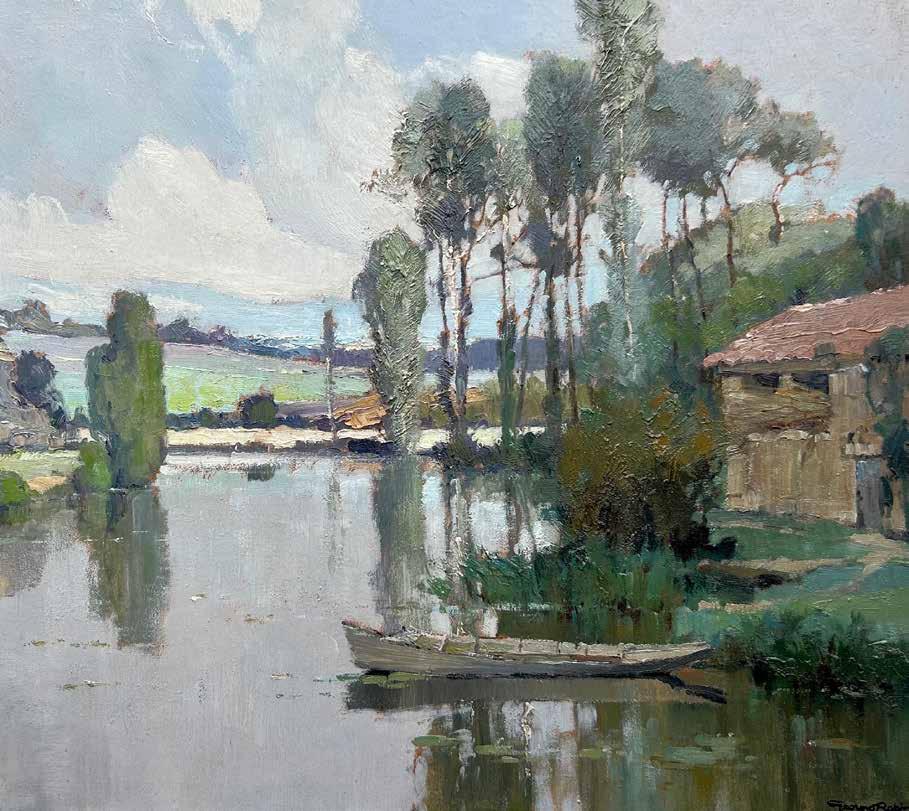
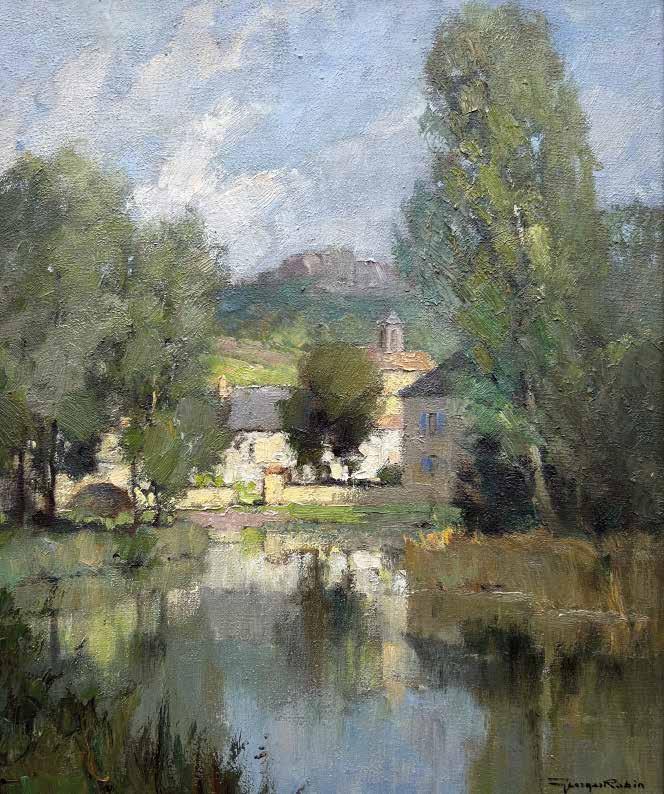
Georges Charles Robin
French (1903-2002)
La Sèvre Nantaise vers Mallièvre, c. 1945
46 x 38 cms / 18" x 15"
$17,500
Oil on Canvas
Georges Charles Robin
French (1903-2002)
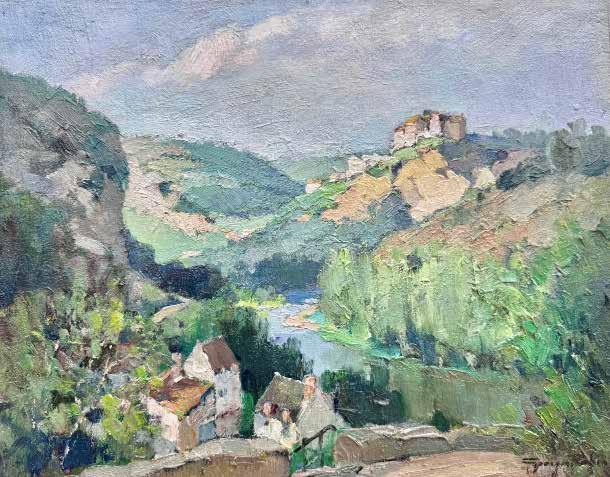
Oil on Canvas
33 x 41 cms / 13 x 16¼ inches
$13,500
L'Aveyron à Bruniquel, c. 1955
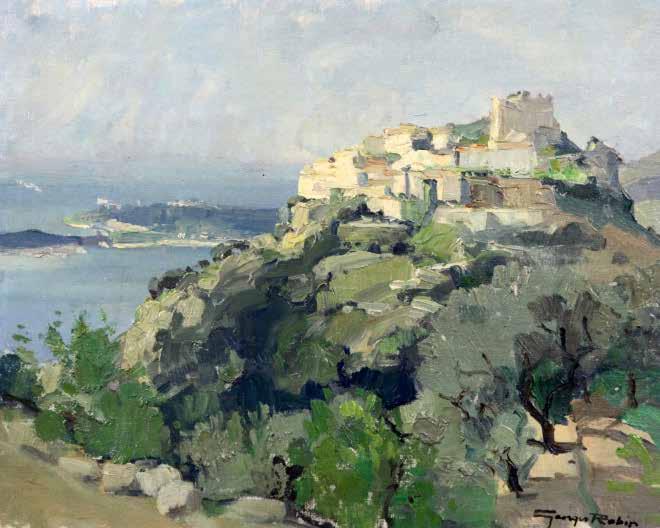
33 x 40 cms / 13 x 15 ¾ inches
$13,500
Panorama sur Eze et le Cap d’Ail, c. 1965
Oil on Canvas
Georges Charles Robin
French (1903-2002)
La Cure, Affluent de L’Yonne à Sermizelles, c. 1975
on Canvas
60 x 81 cms / 23½ x 32 inches $
$35,000

Oil
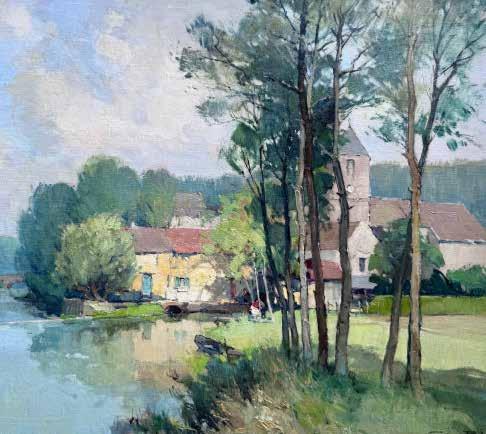
Georges Charles Robin
French (1903-2002)
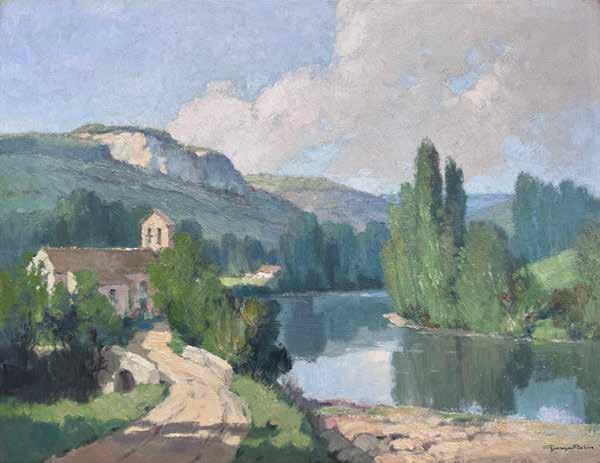
Oil on Canvas
51 x 65 cms / 20 x 25½ inches
$23,500
L'Aveyron à Montrozier, Eglise Romane du XIIème siècle, c. 1960
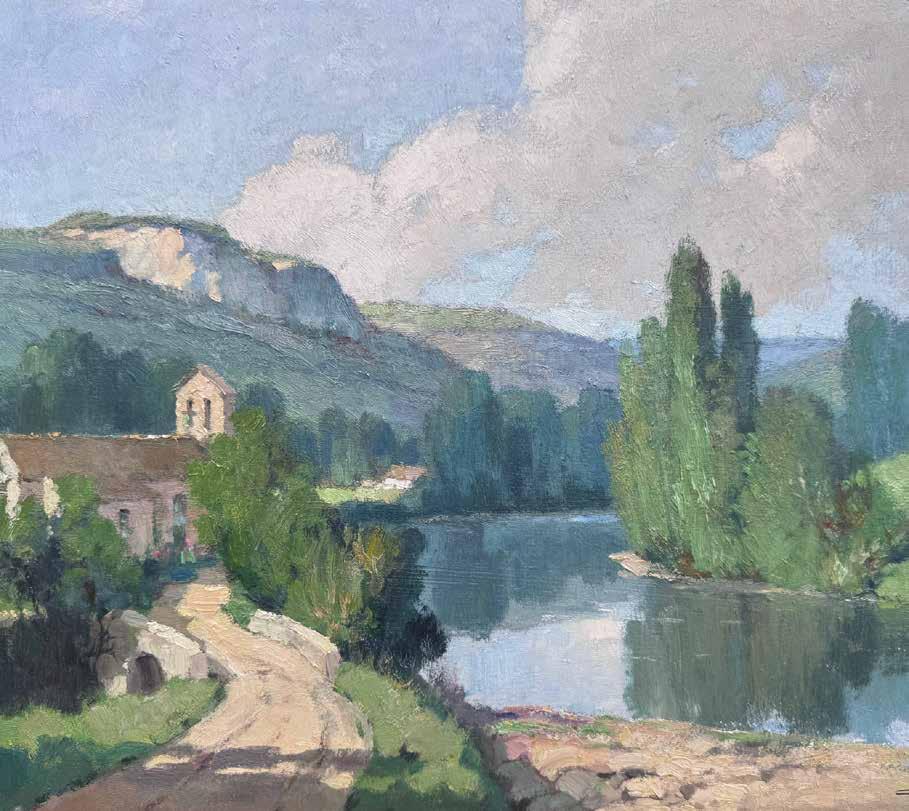
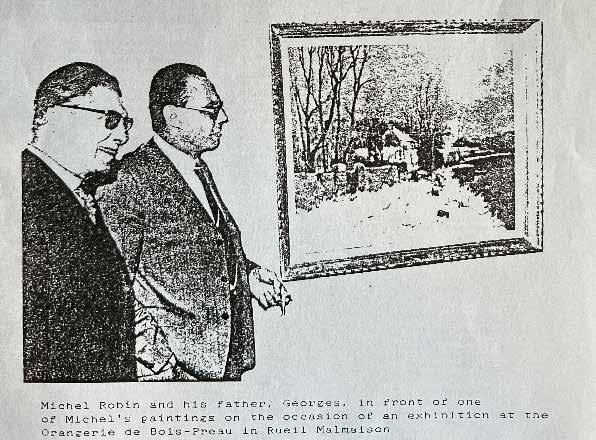
Rene Carpentier Wintz
French, (1913-2003)
Oil on Canvas
22 x 27 cms / 8¾ x 10¾ inches
$2,950
Finistère, Les Bateaux à l'Ancre
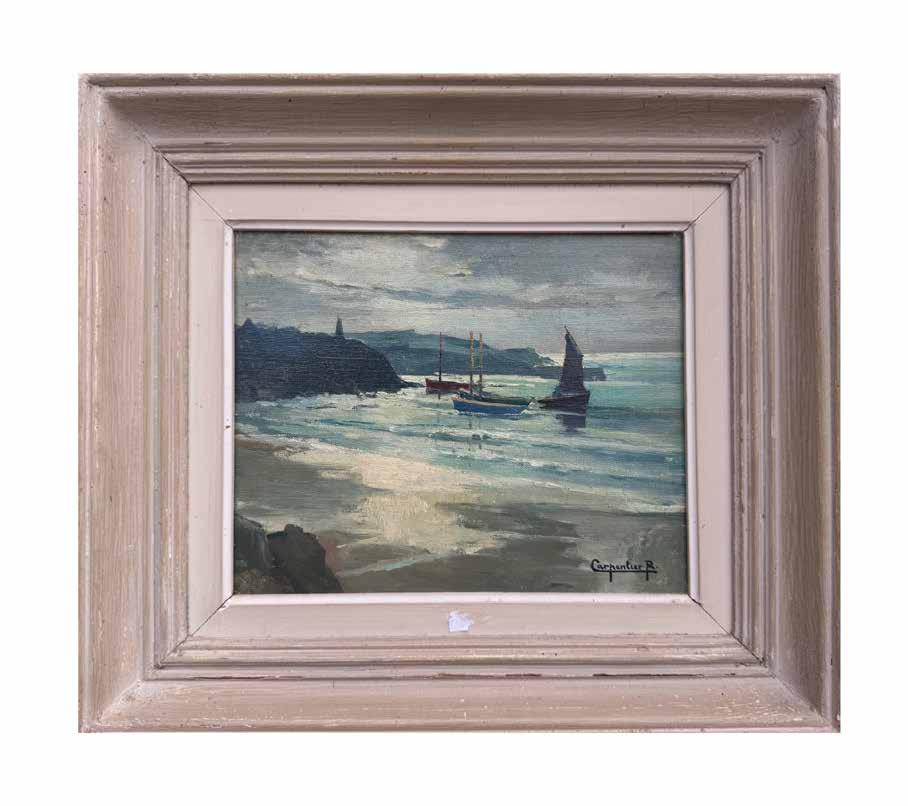
Edouard-Leon Cortes p 66-69
Rob Fogell p Inside Front,28- 41
Donald Hamilton Fraser p 42-45
Yvon Grac p 50-51
Alexandre Louis Jacob p 70-73
Jean Lafon p 64-65
Andre Lhote p 48-49
Gustave Loiseau p 52-63
Georges Charles Robin p 84-103
Georges Terzain p 46-47
Anthony Theakston p 74-83
Peter Wileman p 16-27
Rene Carpentier Wintz p 104-105
